Hisense U8Q is a television that makes it hard not to feel that the manufacturer approached the topic with the ambition of a top student. The picture is strong, vibrant, and contrasted – as if it’s shouting: “look, I can do more than most at this price!” And indeed, there is something to this. The secret lies in the large number of dimming zones in Mini-LED technology. Thanks to them, HDR doesn't just end with promises from the brochure, but can truly impress – especially during evening screenings. It's also hard to complain about motion smoothness. Watching matches and fast-paced games is enjoyable, and while the ball may leave a slight trail at times, it will be a negligible detail for 99% of viewers in everyday watching. Gamers also have reasons to be pleased here – although it should be mentioned right away that there is no HGiG feature. Other than that, it’s really good: low input lag, three HDMI 2.1 ports, and a full set of gaming features make the U8Q stand out as one of the more interesting Mini-LEDs for console fans. Of course, there are no perfect products. The television still carries some "miniLED" quirks, and the Vidaa system – although packed with features – can be less intuitive and has a more modest selection of apps compared to competing platforms. But are these serious flaws or rather minor drawbacks in the context of price and what we actually get? We leave that question for you to answer!
- Matching (Score)
- Our verdict
- TV appearance
- Where to buy
- Contrast and black detail
- HDR effect quality
- Factory color reproduction
- Color reproduction after calibration
- Smoothness of tonal transitions
- Image scaling and smoothness of tonal transitions
- Blur and motion smoothness
- Console compatibility and gaming features
- Input lag
- Compatibility with PC
- Viewing angles
- TV efficiency during daytime
- Details about the matrix
- TV features
- Apps
- Playing files from USB
- Sound
Hisense U8Q vs Samsung Q7F
Direct compare
U8Q
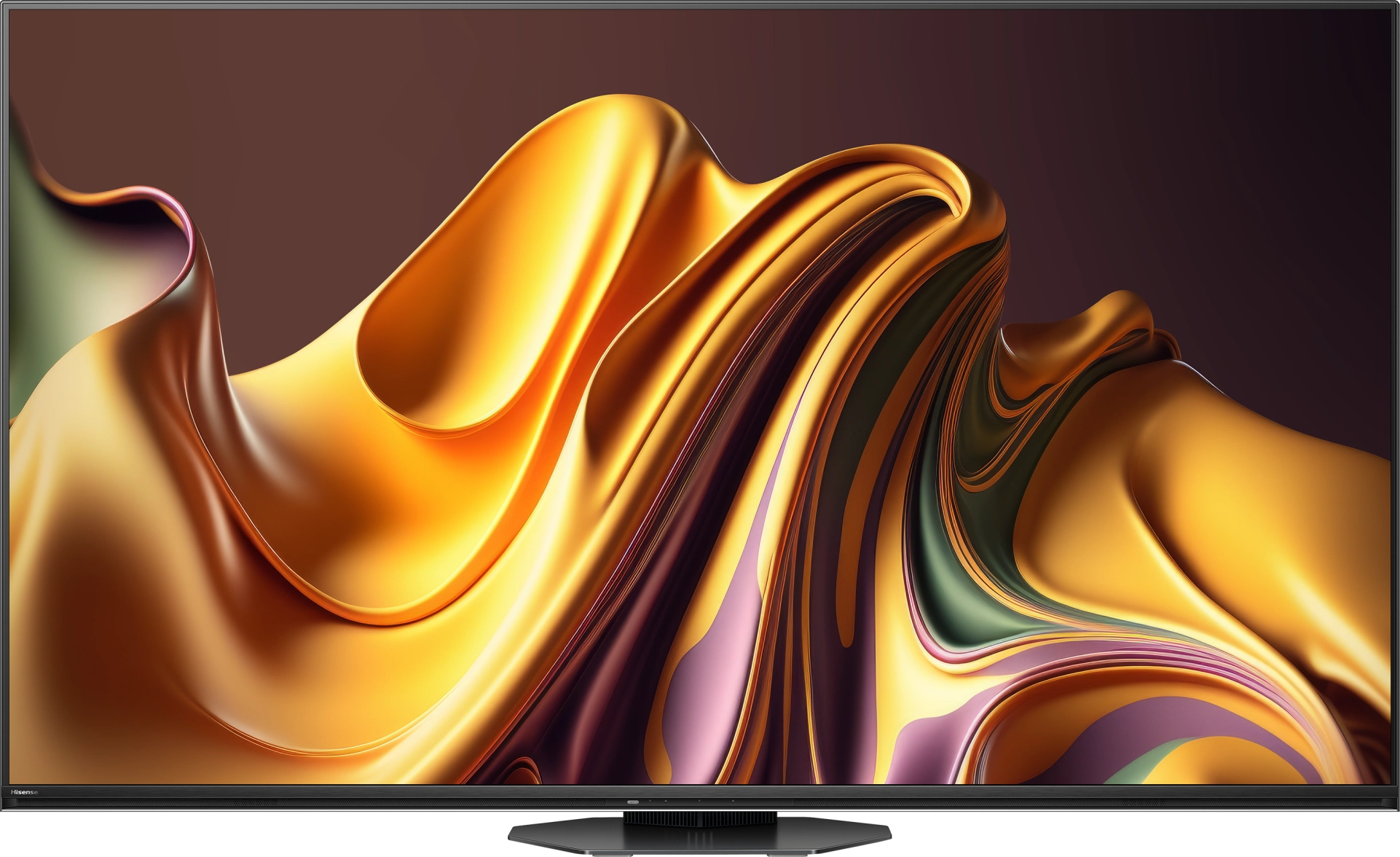

Panel type: LCD VA
Resolution: 3840x2160
System: VIDAA
Model year: 2025
Complete the survey to find out the result

Panel type: LCD VA
Resolution: 3840x2160
System: Tizen
Model year: 2025
Complete the survey to find out the result

Overall rating
8.0
5.7
Movies and series in UHD quality
7.8
5.7
Classic TV, YouTube
7.6
5.6
Sports broadcasts (TV and apps)
7.2
5.3
Gaming on console
8.6
6.3
TV as a computer monitor
8.4
6.0
Watching in bright light
8.2
3.9
Utility functions
9.4
6.6
Apps
7.7
8.7
Sound quality
7.8
5.8
Complete the survey to find out what fits your preferences
Advantages
Great blacks and contrast
Incredibly high brightness
Full package of HDR formats: HDR10, HDR10+, Dolby Vision
Good motion smoothness - 165Hz panel
Exceptional usability in difficult lighting conditions (High brightness + New anti-reflective coating on the panel)
Many features for gamers, VRR, ALLM, HDMI 2.1, 288Hz for PC
All 3 ports in HDMI 2.1 standard (Finally!)
USB-C with video signal output capability (Displayport)
Many features in the Vidaa system
Support for DTS and Dolby Atmos
Solid native contrast (VA Panel)
Vivid colours thanks to the QLED filter
Low input lag (around 10MS)
Robust and smooth Tizen operating system
Compact sleek design with Type C charging
Disadvantages
Missing some apps on the Vidaa operating system
At maximum volume, the television slightly shakes
The television tends to "burn out" the image in 4K HDR content.
Very low brightness (only 250 nits in HDR)
Lack of many gaming features including VRR and HGiG – the manufacturer promised something, but in the end, those features are simply not there
Lack of many classic "TV" features like USB recording or PIP
No Dolby Vision
Average digital image processing quality
Our verdict
Samsung Q7F is the cheapest model from the manufacturer in the QLED line, and it must be said that a few advantages can easily be pointed out here. After calibration, the colours look really good, and the additional QLED filter ensures that the hues are more saturated than in typical budget LCD televisions. Additionally, there’s a VA panel that offers quite decent native contrast. It’s certainly not on the level of top-tier models, but in everyday viewing, it does the job. However, the biggest plus is the Tizen system, Samsung’s flagship offering. It runs smoothly, is comprehensive, provides access to a plethora of applications and add-ons, and allows for easy integration of the television into the SmartThings ecosystem to control other devices in the home. And essentially, that’s where the list of positives ends, as the longer you use the Q7F, the more apparent it becomes that this is a product that is quite unfinished. It’s not just about the panel itself with its low brightness and mediocre image quality in HDR films, but also about the lack of features that usually worked flawlessly in Samsung devices. The manufacturer claims the presence of VRR and HGiG, but in practice, they are of no use, making it difficult to recommend the television even to casual gamers. For regular TV viewing, it doesn’t perform the best either because the digital image processing is at best average, and the feature for improving tonal transitions, which usually works well for Samsung, is practically ineffective here. The Q7F is a piece of equipment that can only be recommended to those looking for a television with two slogans on the box: “QLED” and “good Smart TV”. The rest get a rather bland product that lacks a lot to even compete with other more budget-friendly offerings. It’s a shame because usually, the term "QLED" in Samsung meant something more than just an ordinary television.
TV appearance
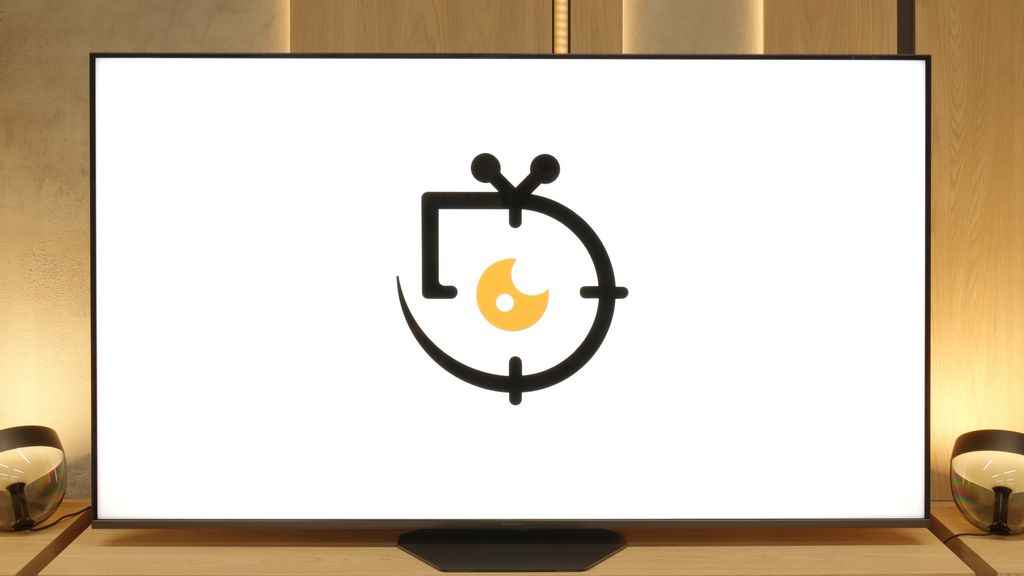
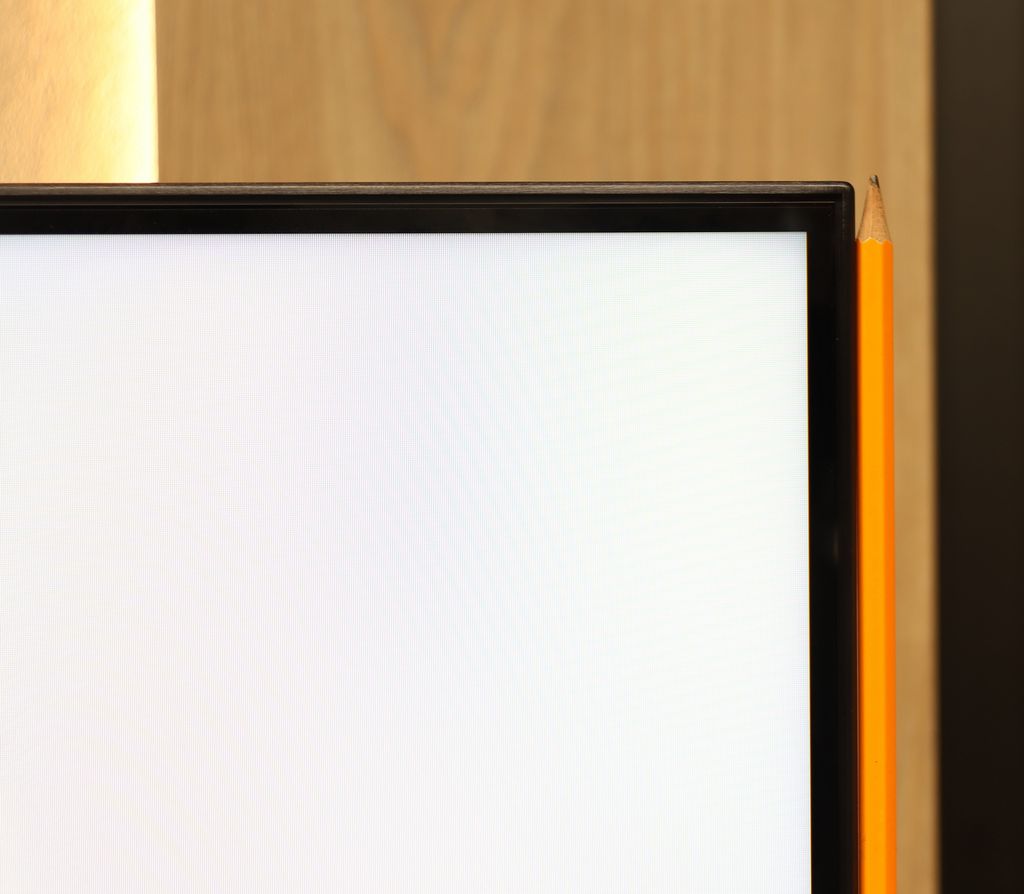
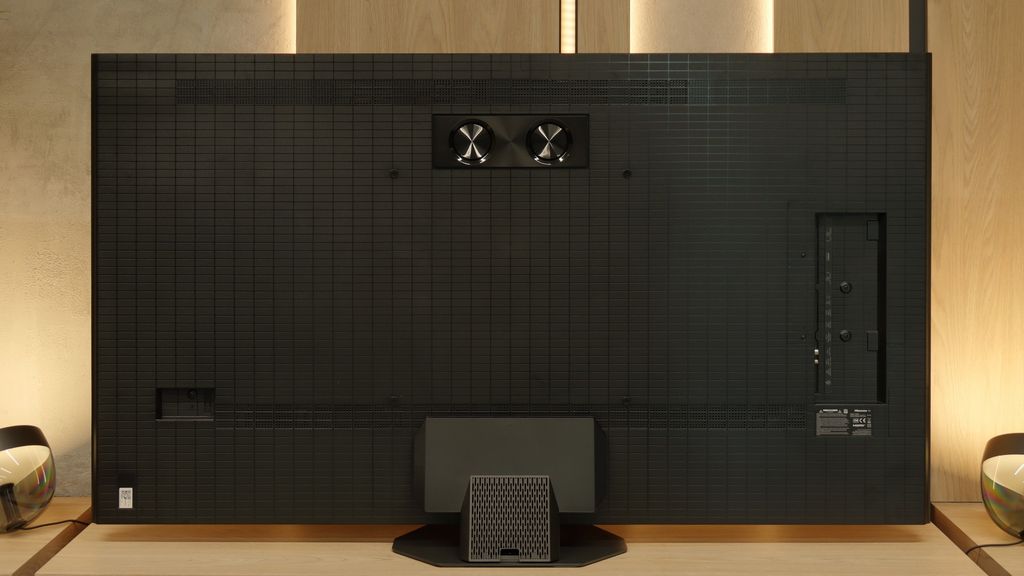
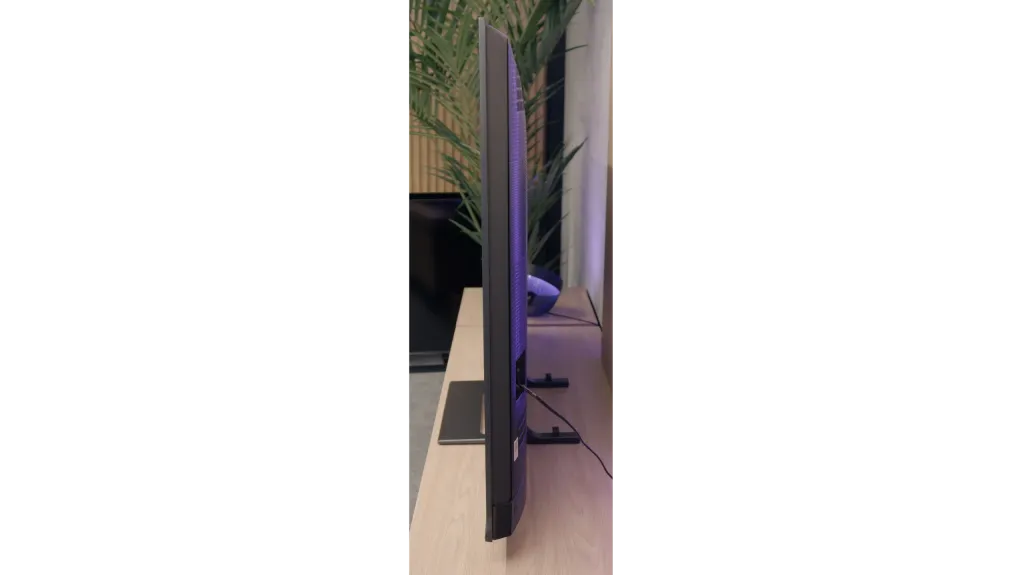




Contrast and black detail
8.6/10
4.7/10
Local dimming function: Yes, number of zones: 2048 (32 x 64)
Local dimming function: No
Contrast:

Result
1,024,000:1

Result
140,000:1

Result
35,000:1

Result
22,350:1

Result
22,300:1

Result
2,850:1

Result
2,750:1

Result
3,300:1

Result
3,050:1

Result
2,750:1
Halo effect and black detail visibility:
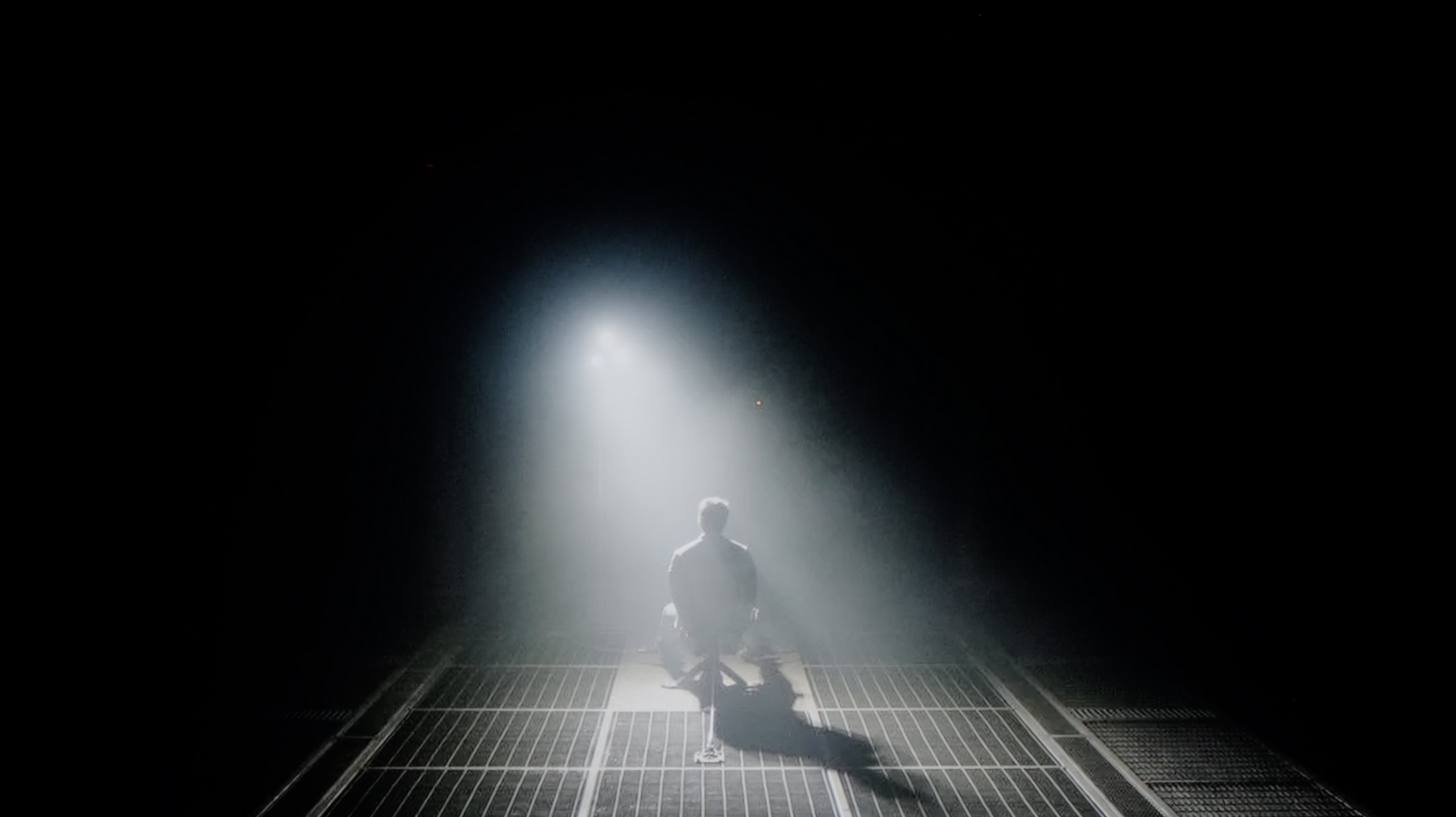

The unit we tested, the Hisense U8Q in 65 inches, is equipped with a VA panel that offers high native contrast on its own. However, this is not the biggest strength of this model—the key lies in the Mini LED backlighting. With the use of thousands of dimming zones and a well-tuned light management algorithm, the contrast in the U8Q can be described as excellent, especially for a TV of this technology.
The best results reach around a million to one—a result that is impressive and places the U8Q among the top Mini LED TVs. Yes, there are certain issues and even drops in contrast, but they are not as dramatic as with many other models in this class that we have tested on our portal. It's also worth noting that like every Mini LED TV, the U8Q is not completely free from typical imperfections—sometimes the picture can be dimmed too much, or there may be slight blooming effects with a halo. However, this does not change the overall impression: the contrast in the Hisense U8Q is stunning and is one of the greatest assets of this model.
The Samsung Q7F in the 55-inch size we tested has a VA panel, which immediately translates to decent native contrast. Values around 3000:1 may not be record-breaking, as we know that VA panels are currently being produced with more than double the contrast, but it still performs much better than IPS or ADS panels, where black quickly turns into shades of grey or navy blue. Unfortunately, we won't find typical local dimming zones here, but the manufacturer has added something like global dimming – that is, dimming the whole screen relative to the content. The effect? In most scenes, black looks quite solid, although during nighttime viewing, we will still see that it resembles a dark navy or grey more than true pitch black. Overall, it's alright, but without any fireworks – it's not spectacular, but there's also no drama.
HDR effect quality
7.6/10
3.7/10
Luminance measurements in HDR:

Result
2195 nit

Result
725 nit

Result
1652 nit

Result
485 nit

Result
1541 nit

Result
215 nit

Result
225 nit

Result
267 nit

Result
113 nit

Result
250 nit
Scene from the movie “Pan” (about 2800 nits)


Scene from the movie “Billy Lynn” (about 1100 nits)


Static HDR10


Dynamic: Dolby Vision
Dynamic: HDR10+


HDR luminance chart:
Samsung Q7F
HDR luminance
Hisense U8Q
HDR luminance
When it comes to HDR, the Hisense U8Q shows its claws. On paper, meaning in synthetic measurement tests, the TV can "push out" nearly 4000 nits of peak brightness. This is a value that most models can only envy. In practice, this translates to very strong light effects in movies – in some scenes we managed to measure real levels from 1500 to 2000 nits, which is a level usually reserved for the absolute top-tier TVs on the market.
Of course, it's not always so perfect. In small, point-like elements, brightness can drop – a good example is scene number 4 from the movie Sicario 2, where instead of thousands of nits we get about 500. But it's worth noting that the effect doesn't disappear completely – the light is still visible, and the image doesn't appear artificially dimmed. This is a typical issue with Mini LEDs, so it’s hard to consider it a major drawback.
However, a huge plus has to be granted for colour reproduction. Thanks to additional coatings improving colour saturation, the U8Q almost covers the entire DCI-P3 colour space (98%), and for the wider BT.2020 gamut it achieved over 80%. This is an excellent result that makes HDR films look juicy, intense, and just very cinematic.
Unfortunately, the Samsung Q7F is not one of the bright televisions, which directly impacts the quality of HDR films. The peak brightness of the panel is only around 250 nits, which is definitely insufficient for claiming a true cinematic experience. In practice, the HDR content does not differ significantly from classic SDR, making it difficult to talk about any "wow effect" that usually accompanies us when watching such films. During testing of film scenes, the image simply looked dark, and the brightness almost always hovered around the aforementioned 250 nits. The worst performance came from shots with small, intensely glowing elements – the global dimming technique used reacted very aggressively in those cases, dimming the entire screen to maintain the black effect. However, it is worth noting the presence of a QLED coating that broadens the colour spectrum. For a budget QLED model, the Q7F performs quite decently here: the DCI-P3 colour gamut coverage is around 93%, and BT.2020 reaches 70%. This means that despite the low brightness, the colours can still look quite vivid and attractive.
Factory color reproduction
7/10
5/10
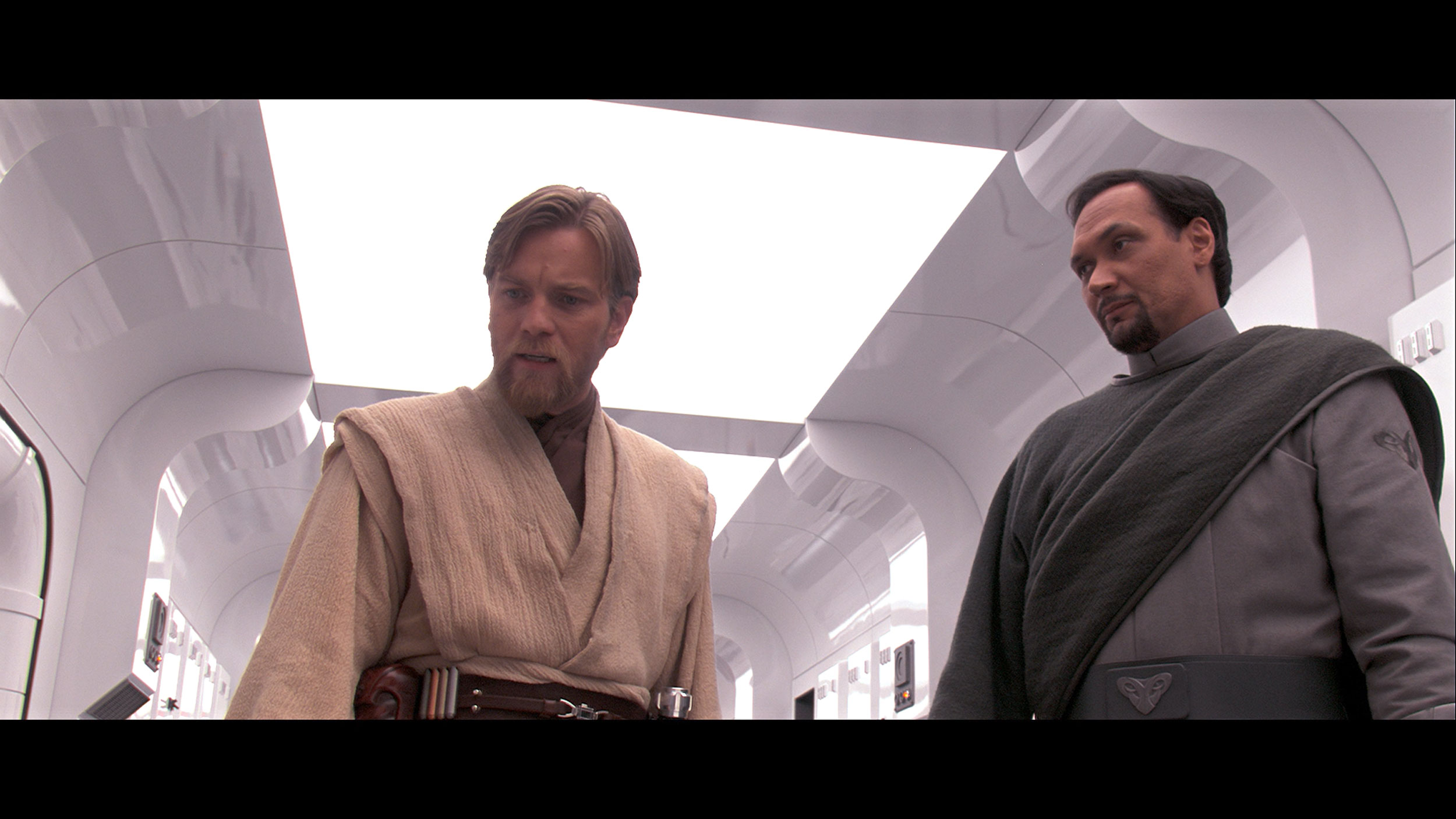
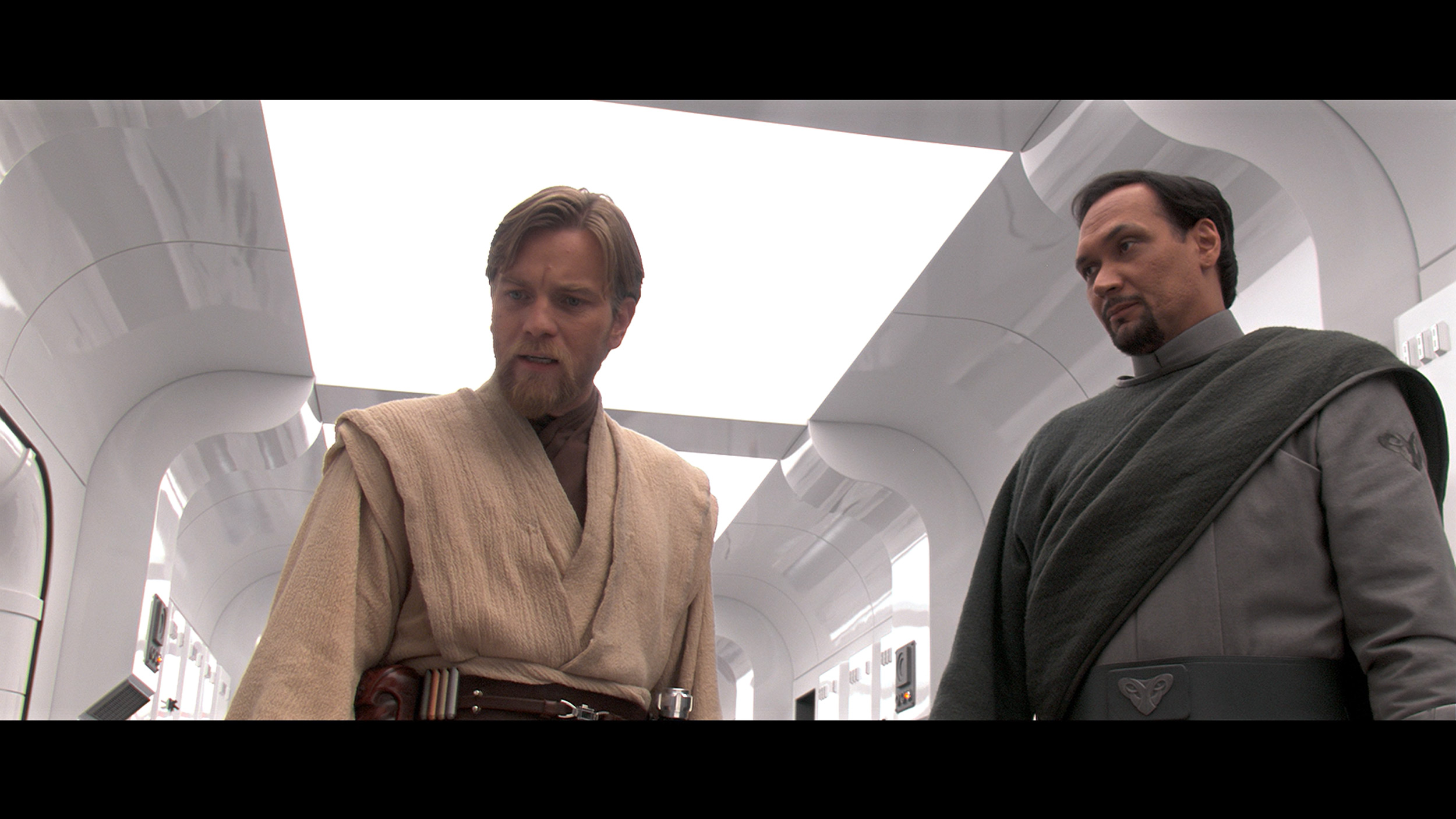
Factory Mode
After calibration


Factory Mode
After calibration
We have to admit that when the U8Q arrived in our editorial office, we were slightly surprised… and in a good way. Usually, white balance in televisions immediately requires adjustment – it can be too warm or too cold, which immediately causes strange colour errors. Meanwhile, here the situation looks really good straight out of the box. Of course, we’re talking about our unit, so there’s no guarantee that every model will be tuned as well, but in our case, the first impressions were very positive. The only more noticeable issue was related to how the television manages brightness. Looking at the EOTF chart, it’s clear that the U8Q tends to brighten small elements on the screen. This, in turn, caused what we mentioned earlier – slight overexposure and the impression that the whole scene is a bit too bright. However, this is not a flaw that negates the picture, rather an effect characteristic of this model.
The reproduction of factory colours in the Samsung Q7F is definitely not one of its strong points. In Filmmaker mode, which theoretically should be closest to neutral, the white balance issue is immediately noticeable. There’s too much red on the screen, while blue is lacking. The effects are very easy to notice – white, instead of being neutral, takes on warm, almost slightly orange tones. In the long run, this makes the entire image appear a bit unnatural, while bright areas of the scene can seem unrealistic. The problems are even more evident in HDR content. The charts show that the TV has significant errors in the Color Checker palette, which results in visible inaccuracies in the real image. In practice, this means that colours are not presented as they should be. The Q7F also heavily manipulates brightness; darker elements are overly boosted, causing them to lose their cinematic feel, while bright parts can be dimmed. This makes the image seem flattened, and contrast, instead of helping to bring out details, only highlights its own limitations. In HDR materials, this is particularly frustrating because every detail matters. In scenes where a subtle play of light and shadow should be felt, the Q7F either overdoes the lighting or, conversely, suppresses elements that should attract the eye. This causes the image to lose its depth, and instead of cinematic realism, we have a rather simplified effect.
Color reproduction after calibration
8/10
7.6/10
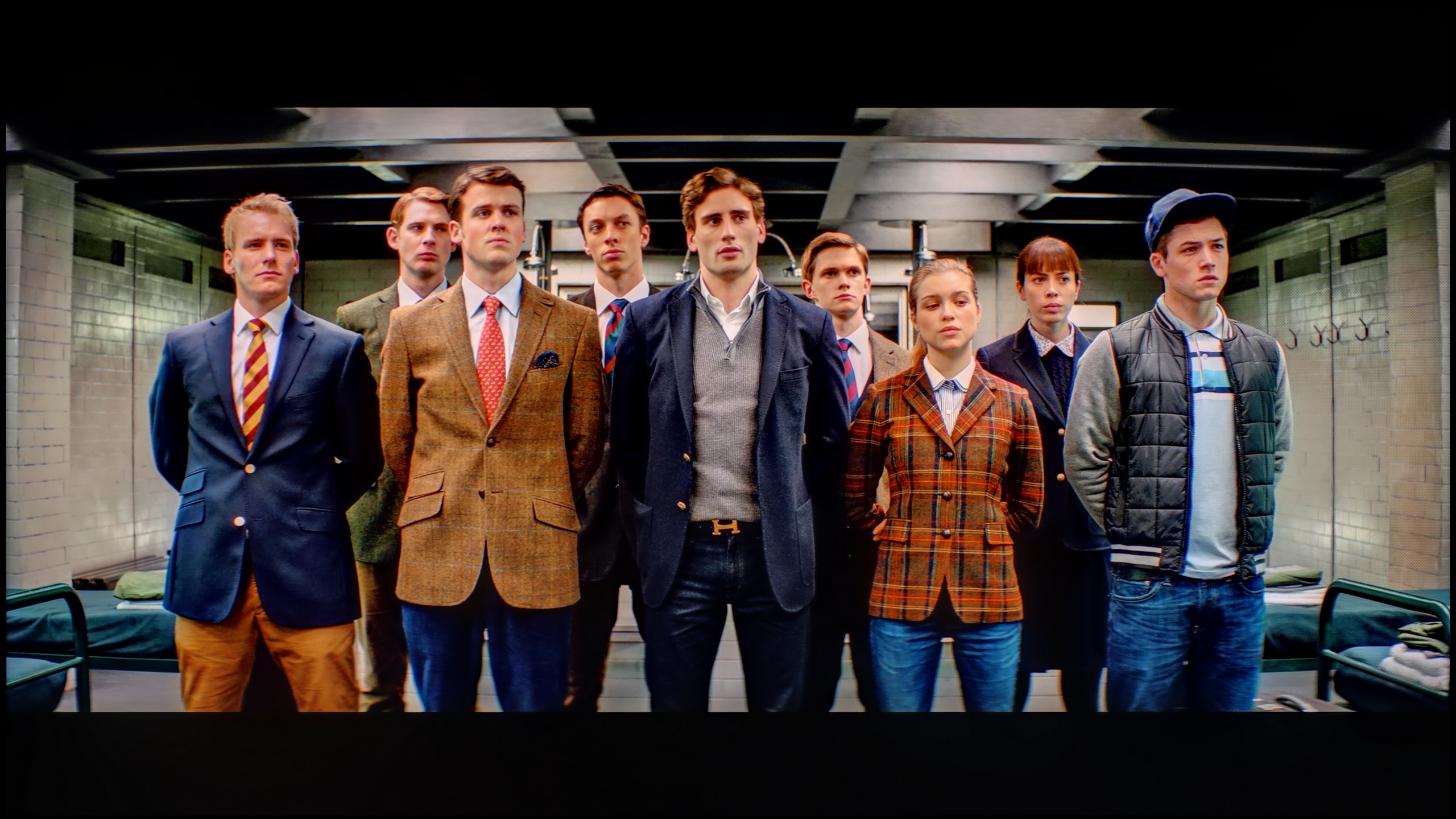



Of course, we wouldn’t be ourselves if we didn’t make adjustments to the white balance. After calibration, we managed to level the SDR signal to near perfection – older films, YouTube content, and classic television looked nearly ideal on the U8Q. It’s truly an impressive level that shows this model can do a lot if given a bit of help. Unfortunately, the situation is different with HDR content. The colours themselves don’t pose much of a problem, but the biggest issue with the U8Q remains the EOTF brightness characteristics. In practice, the television tends to "shoot" above how the image should originally look. It’s this slight "blowout" we noticed earlier in comparisons with the best screens on the market. It’s a bit of a shame that this characteristic can't be completely tamed – if we could maintain equally good brightness control in HDR as we do in SDR, we would be looking at an absolutely reference-level image.
After professional calibration, we managed to bring the Q7F to order – at least in terms of SDR content. The image in this mode looks really good: the white balance has been set correctly, the colours appear natural, and the errors in the colour palette have dropped to levels practically invisible to the eye. Gamma behaves exemplary, and the only minor flaw remains a slight lightening of smaller elements, which stems from the lack of local dimming. For everyday watching of television or films in standard quality, the Q7F performs surprisingly well.
It was significantly more challenging to tame HDR content. Despite adjusting the white balance, the television still heavily manipulates brightness, causing scenes to appear unnatural – what was meant to be subtly darker can sometimes be overly bright, and the bright parts of the image can occasionally be dimmed. The final effect is better than in factory settings, but it’s clear that the construction limitations of the Q7F do not allow for fully utilising the potential of HDR materials.
Smoothness of tonal transitions
8.9/10
9/10




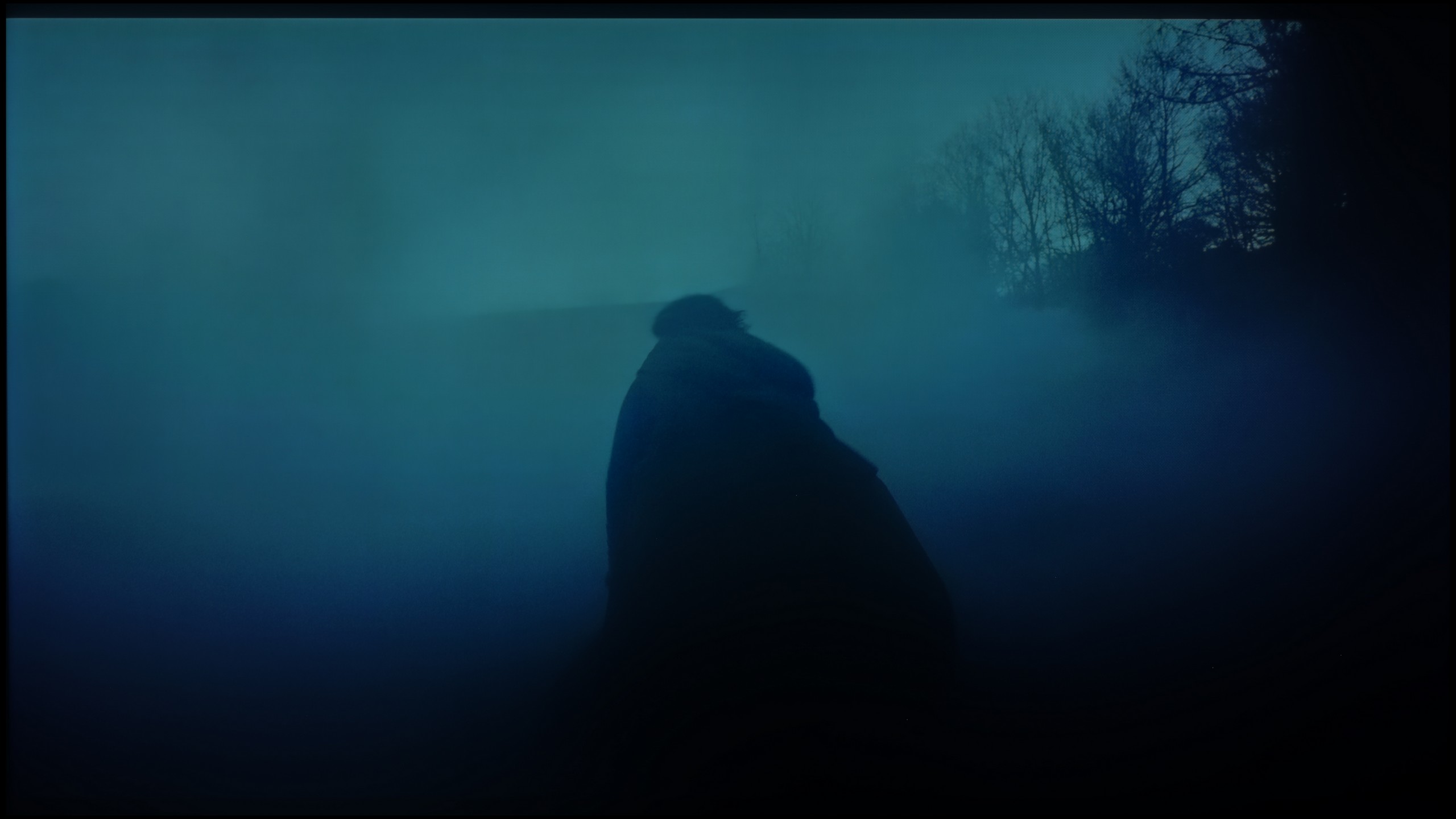

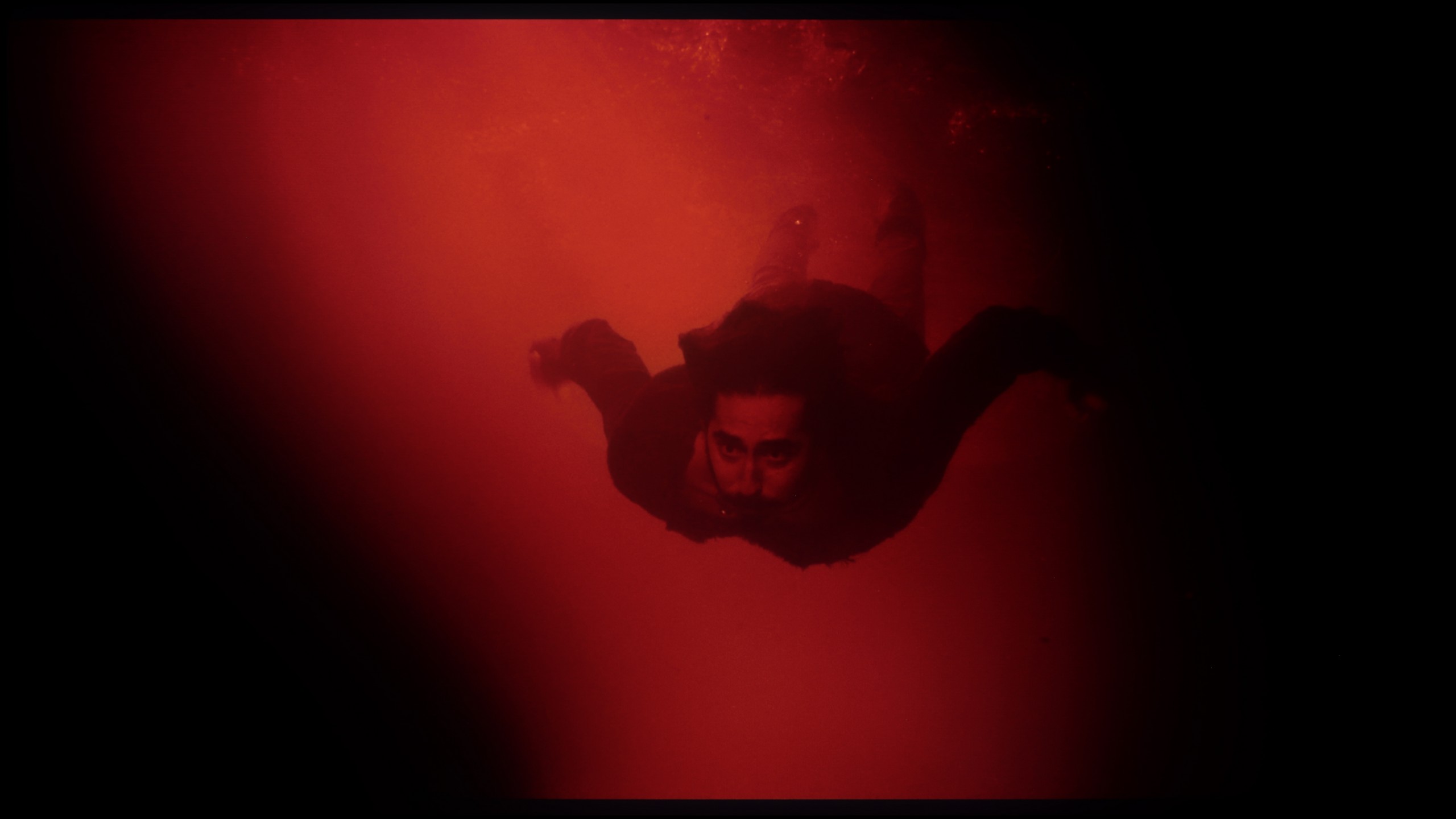





When it comes to tonal transition fluidity, the Hisense U8Q left a really great impression on us. Even in the darkest scenes, where usually other TVs show ugly banding and unpleasant transitions, here the picture remains smooth and cohesive. Nothing is separating, there's no "banding" effect – everything looks just as it should. Similarly, in brighter shots – it's also very good. Sure, if we were looking through a magnifying glass, we might find some minor flaws, but in normal viewing, it's hard to pick on anything. Overall, it performs very, very well!
The fluidity of tonal transitions in the Q7F is really quite good. The gradients are smooth, without harsh steps or artificial divisions that can be quite noticeable in cheaper TVs. Even in more challenging scenes, like the one from The Revenant or the red shot with the actor swimming in water, the picture maintained its quality and simply looked good. If someone is looking very closely, they might notice slight imperfections in extremely demanding moments, but they are subtle enough that most people won’t even notice them. Given this price range, the Q7F performs surprisingly well in terms of gradation, and it's hard to find anything serious to complain about.
Image scaling and smoothness of tonal transitions
8/10
4.5/10
Smooth transition function
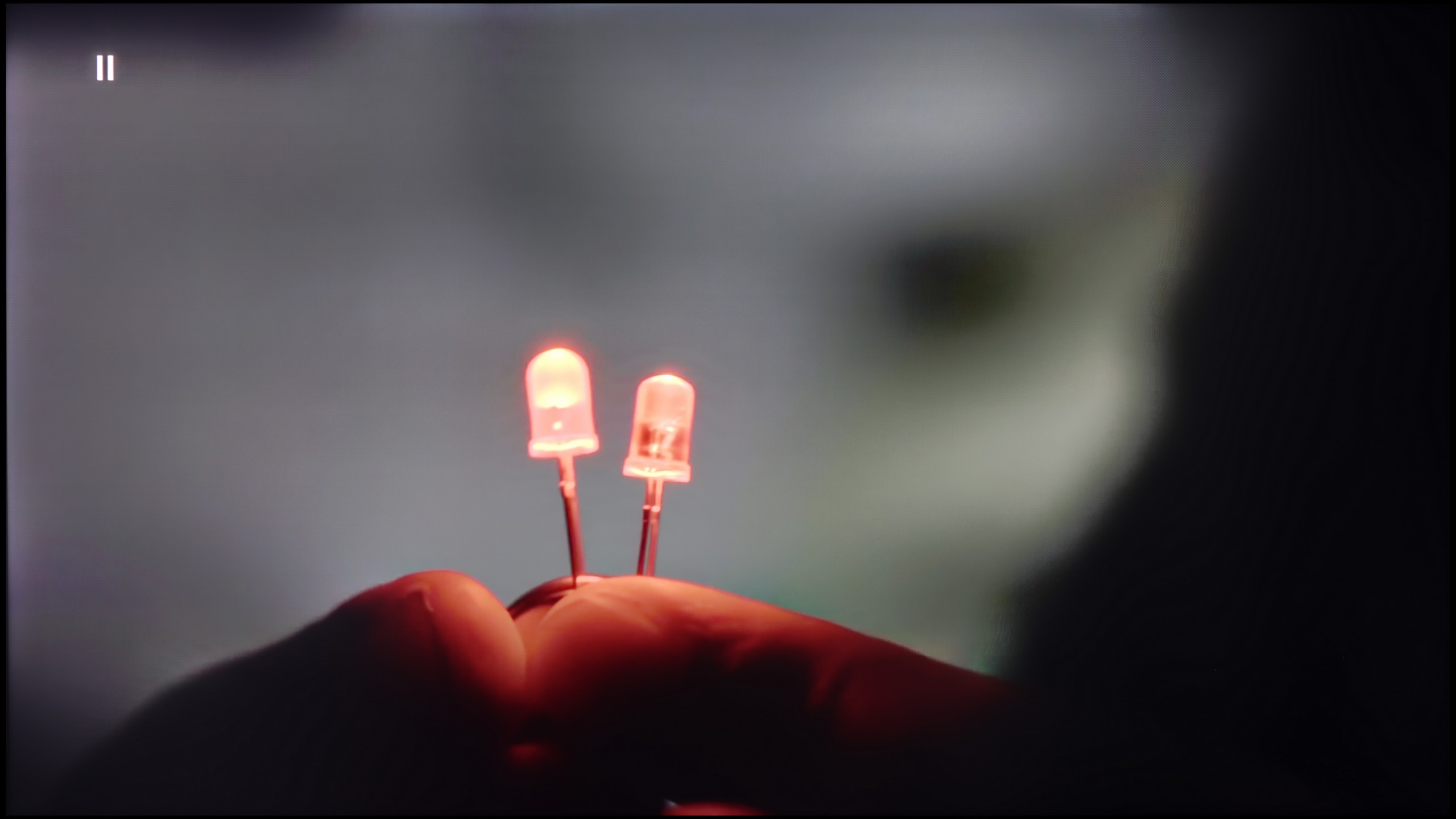

Image without overscan on the SD signal


Hisense U8Q handles lower quality materials quite well. The television can smooth tonal transitions thanks to the “Smooth and Gradient Picture” feature – it works best on the Medium setting. It nicely dims unwanted bands and irregularities in the image, but importantly, it doesn't remove the film grain or fine details.
The upscaling itself is also at a good level. Image from lower resolutions appears smooth and soft, sometimes a bit too much – we get a plastic effect that may not appeal to everyone. Fortunately, this can be easily corrected with the sharpness slider, allowing you to adjust the image to your personal preferences.
Upscaling and digital image processing in the Q7F is a bit of a rollercoaster. On one hand, we have really nice upscaling – weaker sources look better than you might expect. The image becomes clearer, sharper, and even older films or free-to-air TV hold up well. Samsung has been strong in this area for years, and the Q7F confirms that. On the other hand… things start to get tricky. The TV has a problem with overscan – part of the image is simply cut off, and it doesn't look very elegant. Additionally, we were let down by a feature called "noise reduction," which should improve the smoothness of tonal transitions in weaker materials. In other Samsungs, it works relatively well, but here it practically makes no difference – the banding in gradients is still there. It's a bit of a shame because we expected more from a model that is aimed at users looking for a display for SDR content.
Blur and motion smoothness
7.8/10
5.5/10
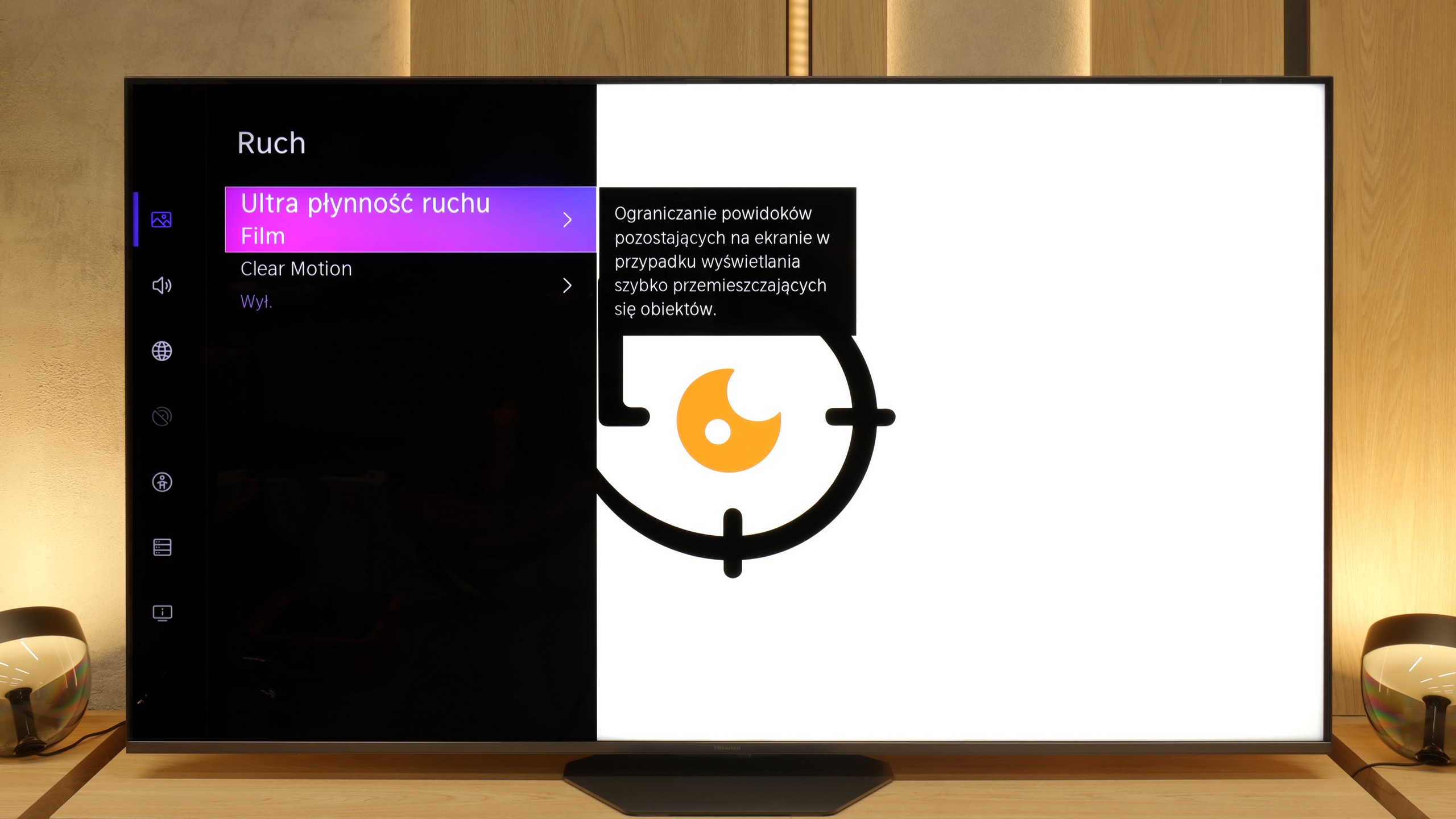

Blur (native resolution, maximum refresh rate):
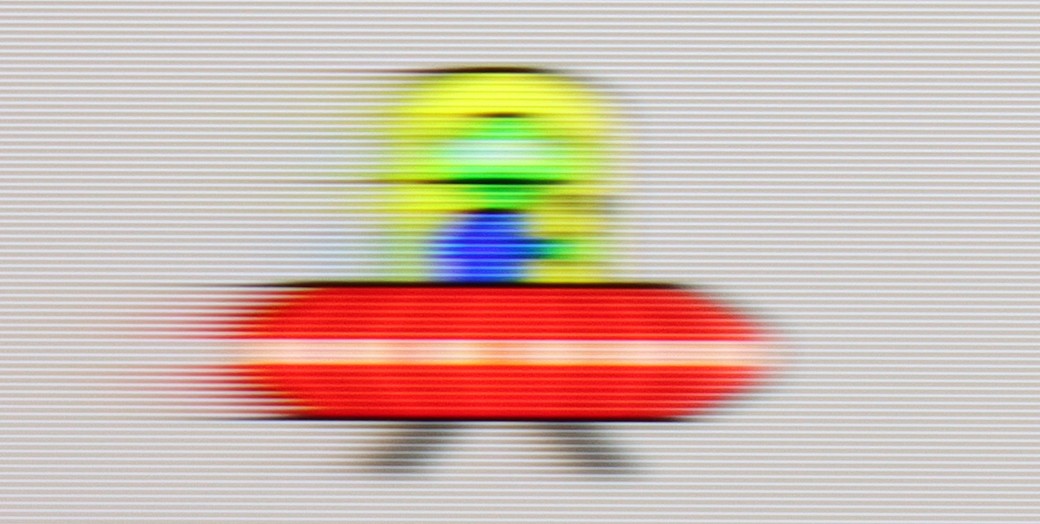
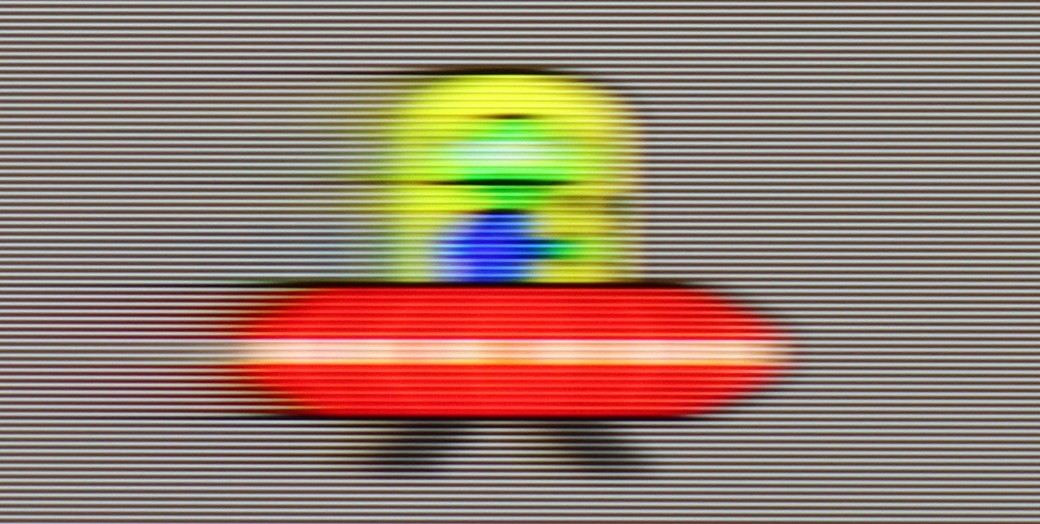
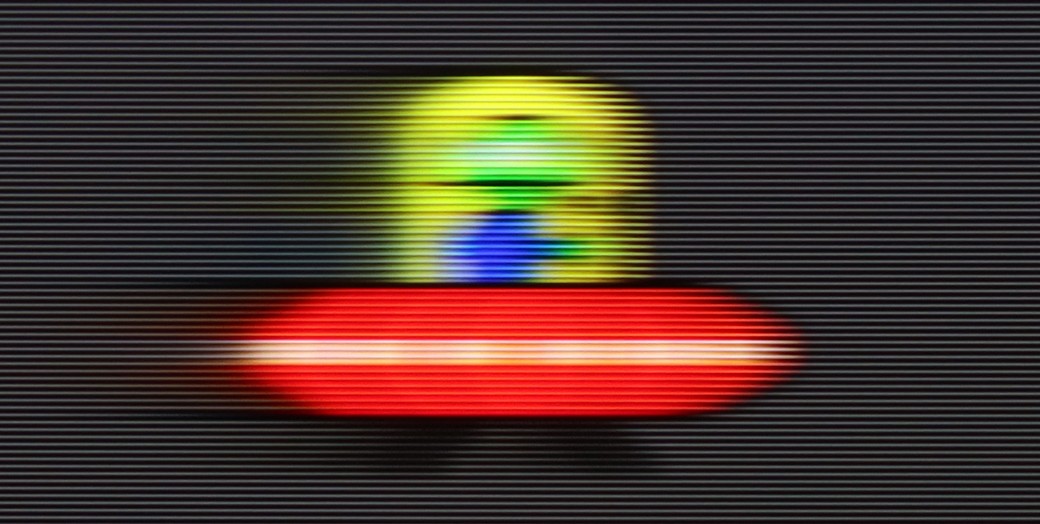



Blur (BFI function enabled):



Image flickers in this mode



Smużenie (1080p@288Hz):

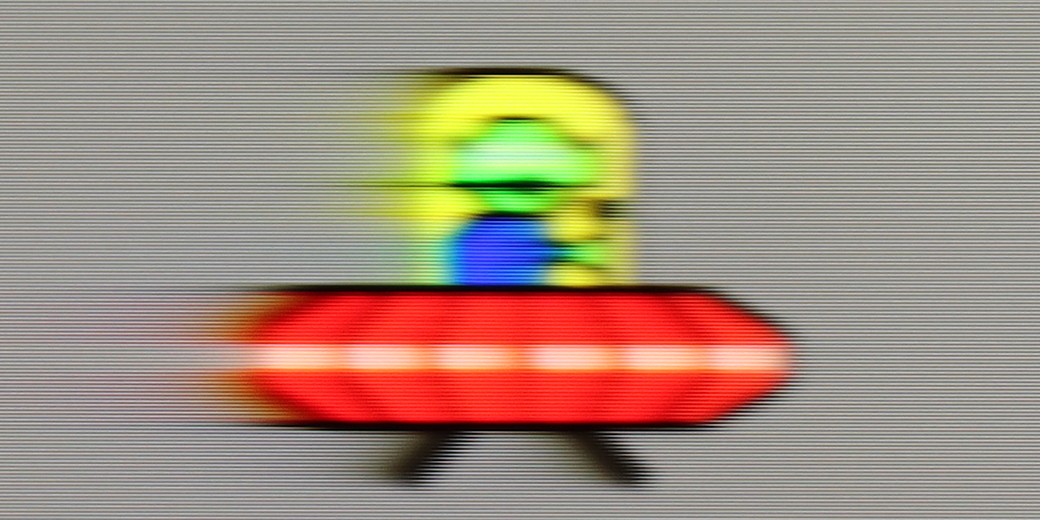
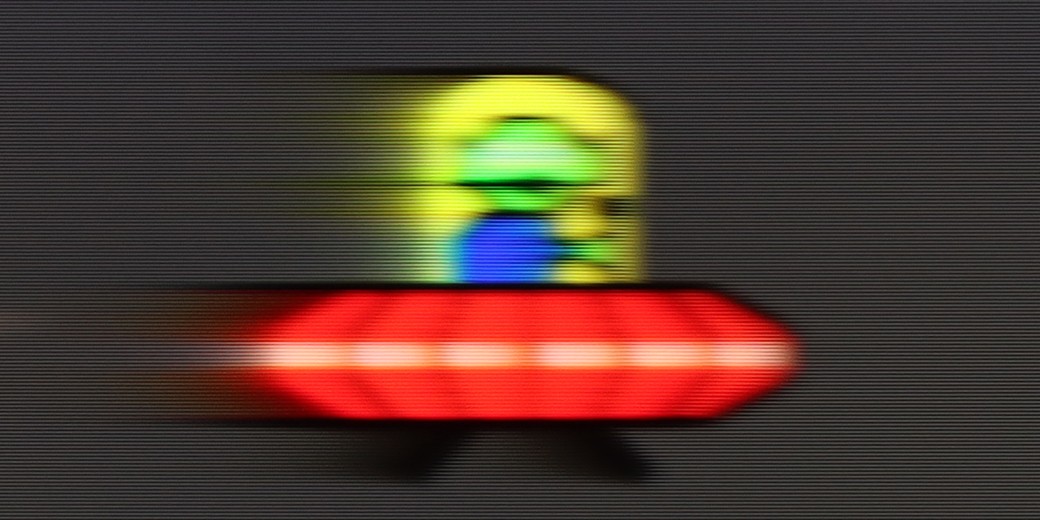
Smużenie ():
Hisense U8Q has a panel that can refresh the image up to 165 Hz in 4K resolution. In practice, this will mainly benefit PC gamers, but as they say – better to have it than not 😊. For movies and series, we have a built-in smoother called Ultra Motion Smoothing. In the settings, it can be easily adjusted to your own preferences – whether you want a more ‘cinematic’ frame rate or a smooth, theatrical spectacle.
Motion blur and motion fluidity in the Q7F is probably the most budget-friendly aspect of this television. The 60 Hz panel makes the motion blur quite noticeable, especially in dynamic scenes, and it's rather hard to consider this model as equipment designed for watching sports or playing fast-paced games. In tests with the little green man, there was a long trail, similarly, the ball in a football match would leave behind streaks.
On the positive side, the presence of motion smoothing is worth noting. In films, it really makes a difference – especially since most materials are recorded in 24 frames. Here we can decide whether we prefer a more "cinematic" image, with a slight judder typically found in cinema, or a smoother, more “TV-like” one. This actually works quite well and helps improve the viewing comfort for series or movies.
Console compatibility and gaming features
8.5/10
3.3/10
- ALLM
- VRR
- VRR range48 - 288Hz
- Dolby Vision Game Mode
- Correct implementation of HGIG
- 1080p@120Hz
- 1440p@120Hz
- 4K@120Hz
- Game bar
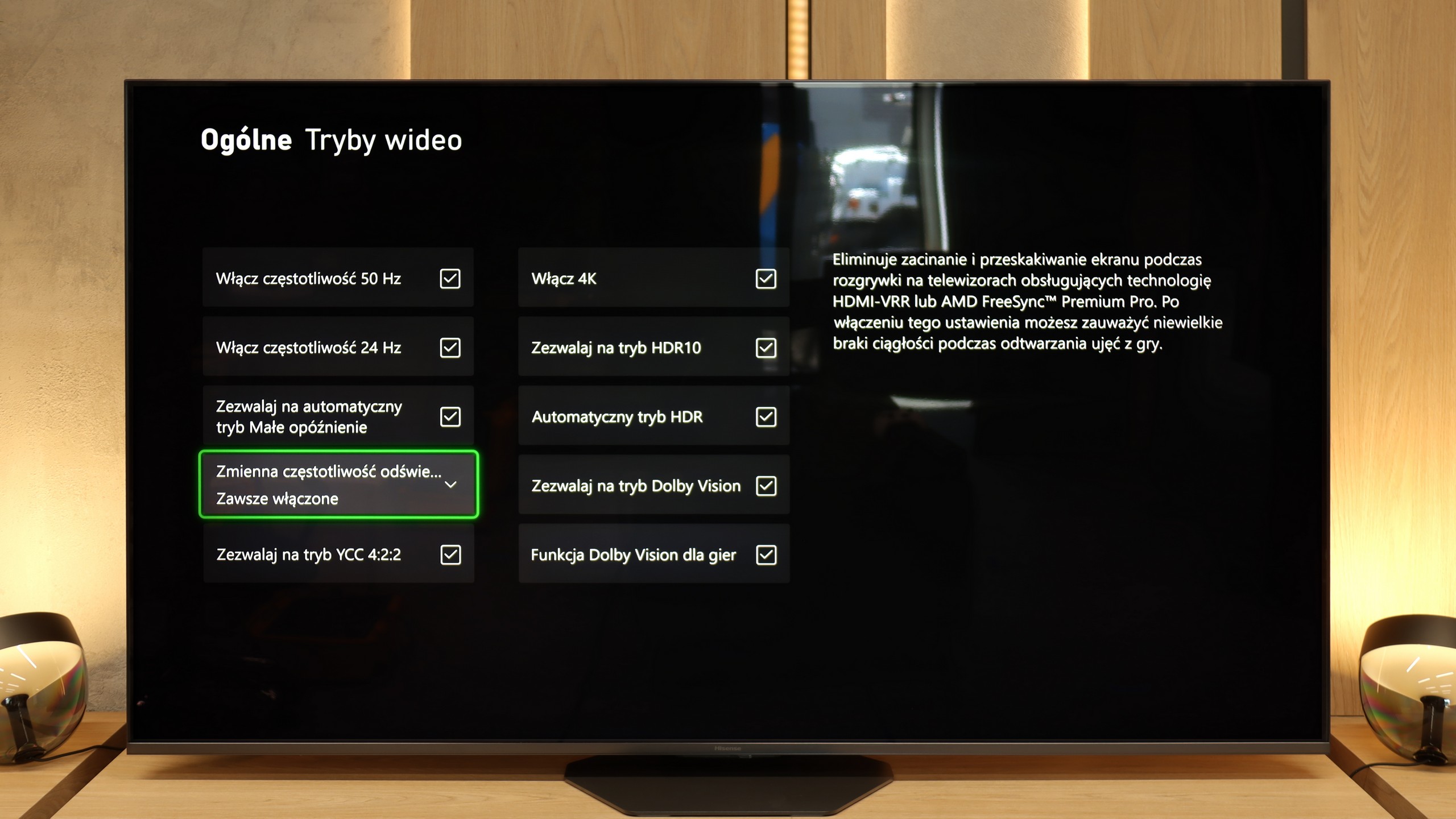

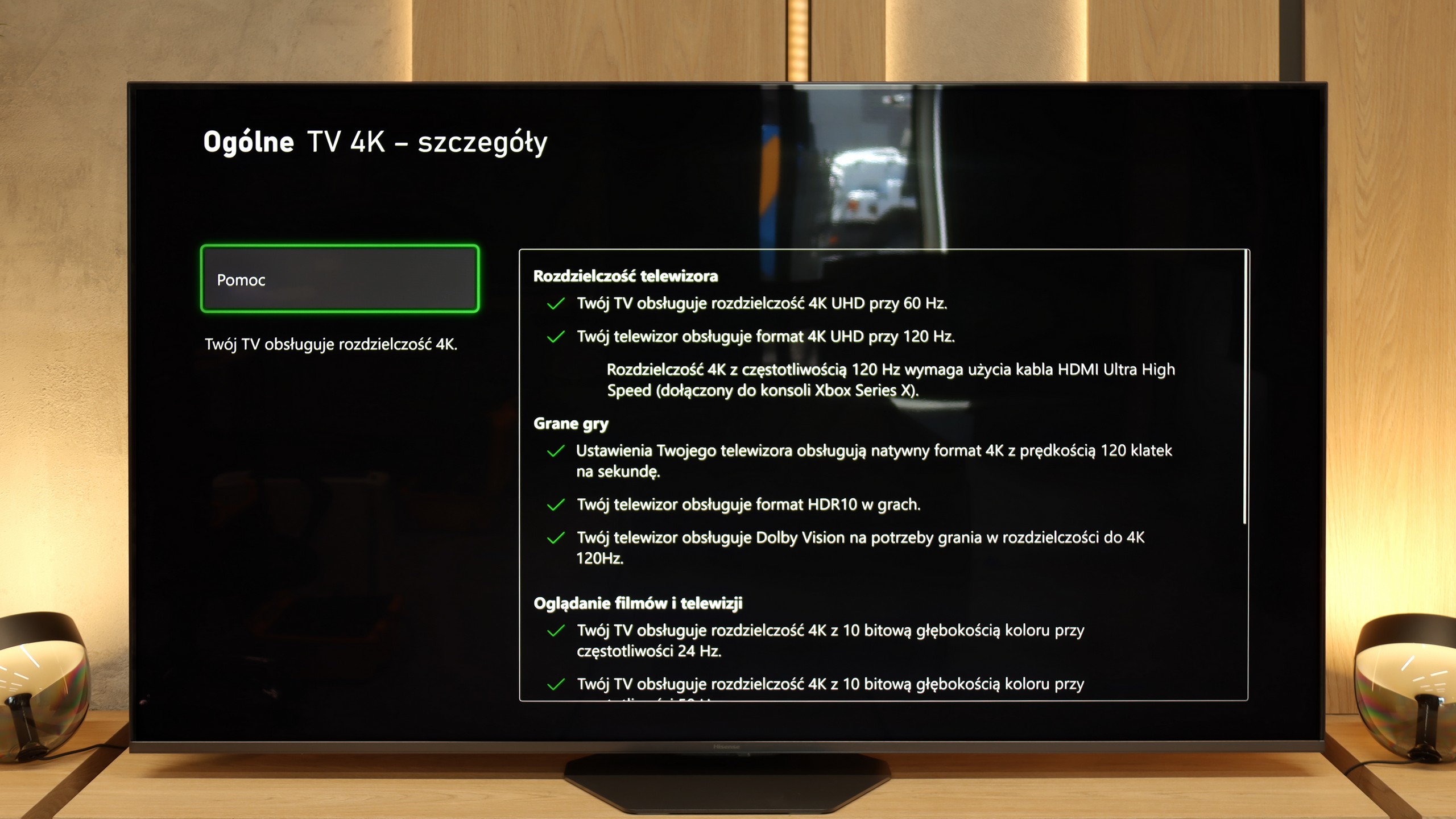

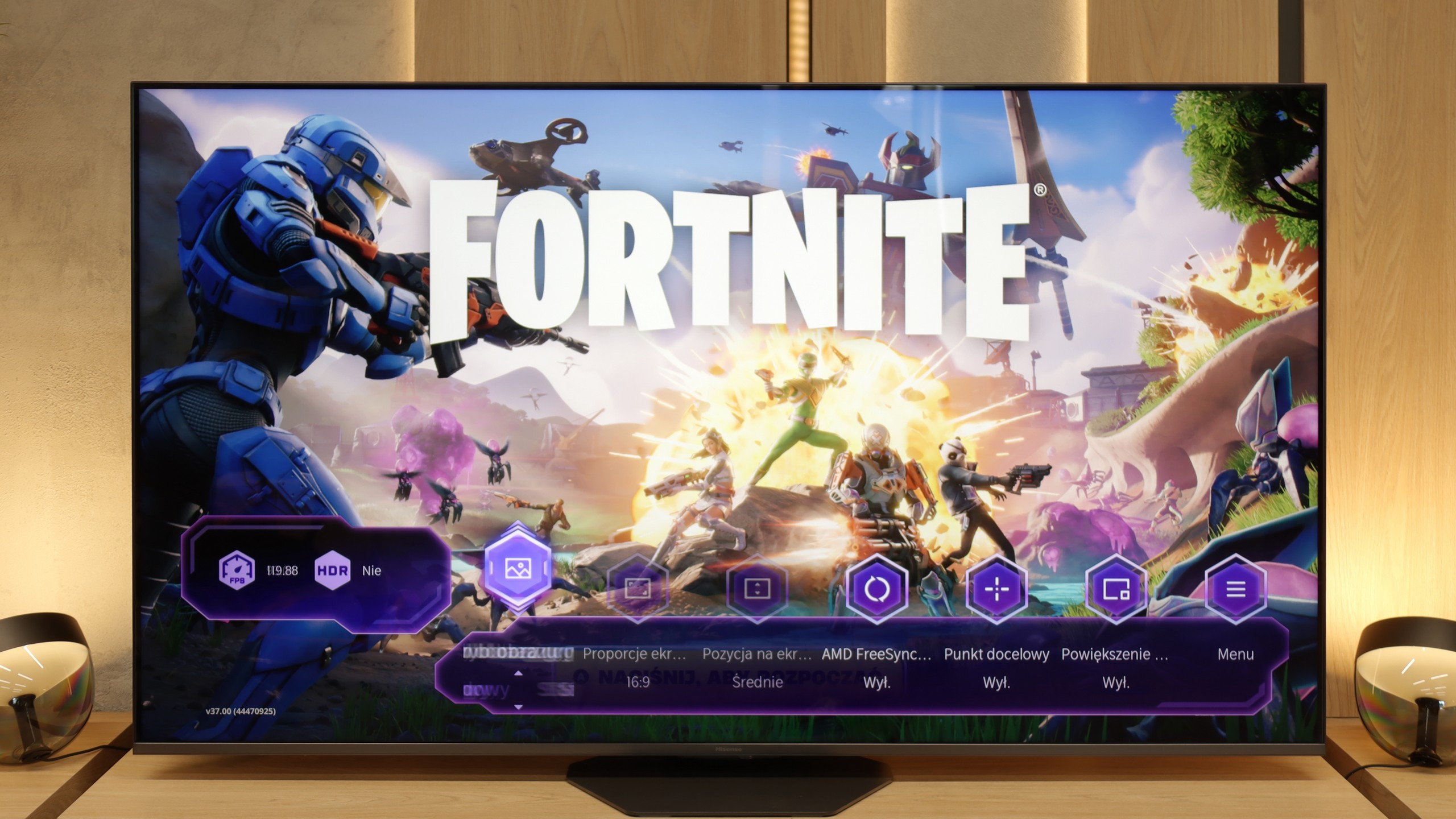

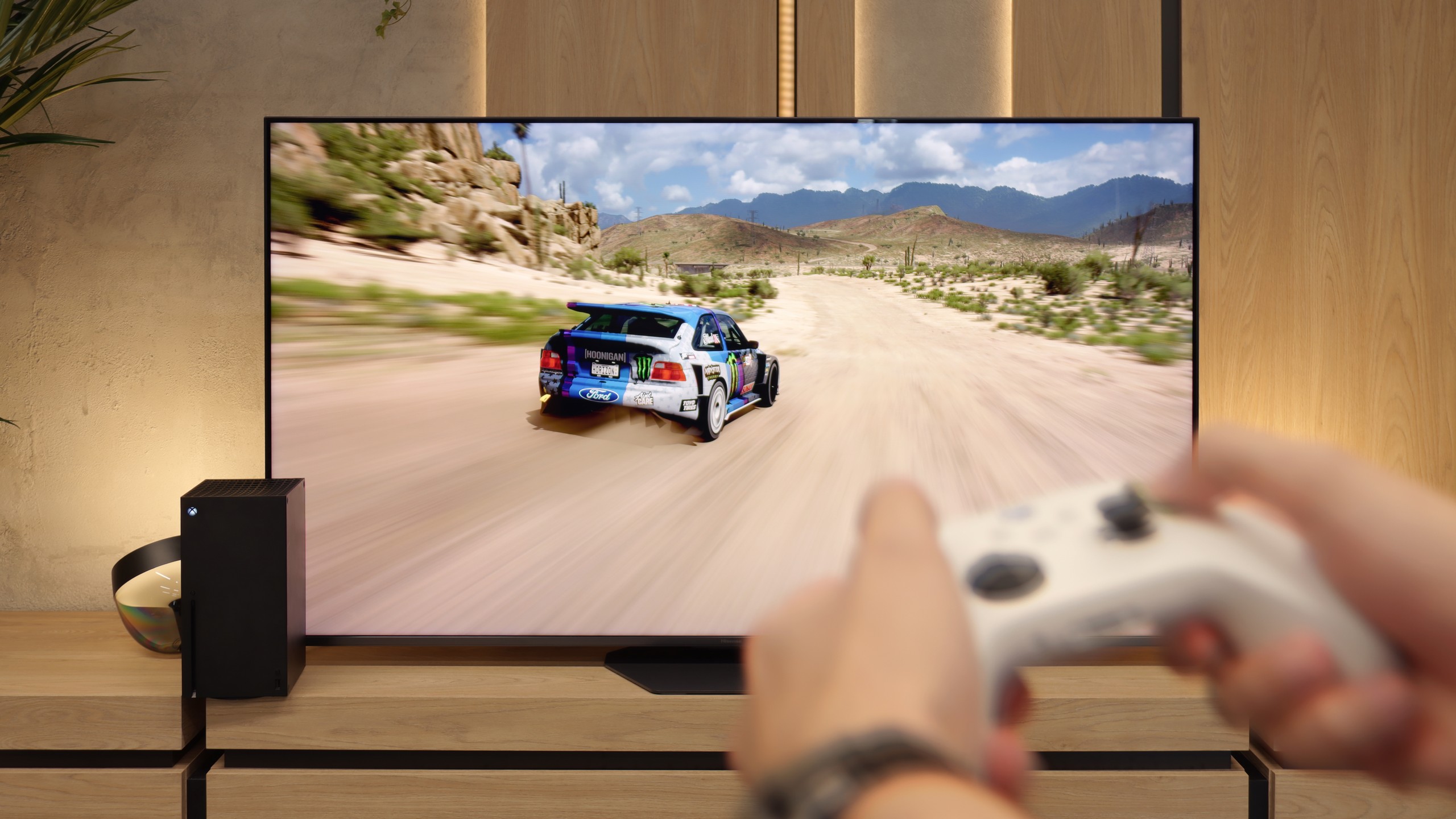

In terms of features, the Hisense U8Q has practically everything one would expect from a modern gaming television. Thanks to the new processor, the manufacturer has managed to implement three HDMI 2.1 ports, so there’s no trouble connecting multiple consoles or a computer. On top of that, it includes all the key technologies – Game Bar with parameter previews, variable refresh rate (VRR), automatic game mode (ALLM)… in a word, a complete set.
But as often happens with Hisense, it’s missing just a bit from perfection. The biggest drawback remains the lack of support for the HGiG format, which allows the TV's brightness to be adjusted to the console and gets the most out of HDR in games. It’s a shame because if this feature were included, we’d have a device practically made for gamers. As it stands, the U8Q remains “only” a very good choice 😉
The features for gamers on the Samsung Q7F is a topic that stirs up quite a few mixed emotions. On one hand – no reasonable person was expecting miracles here, after all, it’s a 60 Hz television and it was clear from the get-go that this wouldn’t be equipment to squeeze the maximum from a console or PC. On the other hand, since the manufacturer promised specific solutions in promotional materials, it is only natural that we wanted to see them in practice. At the start, it’s looking pretty good. The automatic game mode (ALLM) works, so there’s no need to manually fiddle with the settings; the console switches the TV to low latency mode by itself. Plus, we have the Game Bar, which looks impressive and allows you to check a few basic parameters without leaving the game. And this is where the good news ends.
The biggest problem with the Q7F is VRR, or rather its absence. Indeed, the appropriate icon appears in the menu, you can even see it in the Game Bar, but throughout the entire test, the function remained dead and could not be activated in any way. Even more disappointing is the matter of HGiG; this option was actually available in the beginning, but after a software update, it disappeared completely, which is just unprofessional. Therefore, the Q7F is only suitable for absolute basics. Sure, you can turn on the console, play calmer titles, and enjoy low input lag, but if someone is counting on more advanced features that the manufacturer promised, they will be disappointed. This is not a television one buys with gaming in mind, and it’s better to be aware of this before purchasing.
Input lag
9.8/10
10/10
SDR
HDR
Dolby Vision
The Hisense U8Q really performs well in terms of signal delay. In 120 Hz mode, the input lag is around 10 ms, and with 60 Hz content, it hovers around 18 ms. These are values that place it among the fast televisions, and in practice, it's hard to have any significant reservations about them. The reaction is instant, controlling a character or a car on screen occurs without noticeable delays. Regardless of whether someone is playing dynamic shooters or calmer narrative titles, the U8Q will perform excellently.
Input lag on the Samsung Q7F is really good for a 60 Hz TV. Measurements showed values below 12 ms, which means this model is more than sufficient for regular gaming on a console. Of course, it doesn't compare to the top-tier 120 Hz screens that can drop below 6–7 ms, but in everyday use, it's hard to talk about noticeable delay. In this regard, the Q7F doesn't fall behind its competitors in its segment and can easily be considered a safe choice for casual or sports gaming. At least in this respect.
Compatibility with PC
8.4/10
6/10
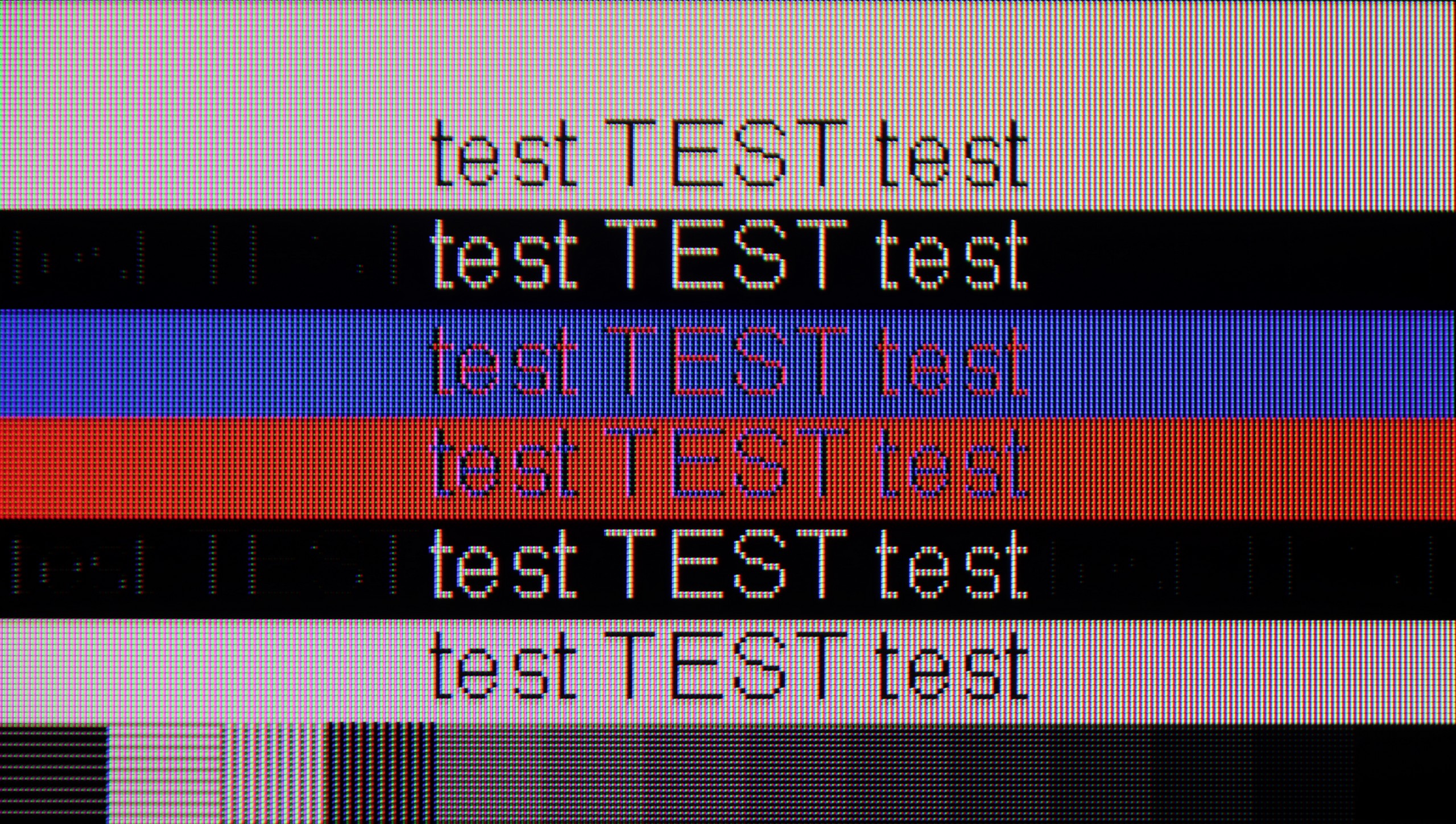

As we mentioned regarding the features for gamers – the Hisense U8Q also communicates well with computers. The 4K display with a refresh rate of 165 Hz is impressive on its own, and at Full HD resolution, it can even "overclock" to 288 Hz. This is great news for e-sports fans, where speed of reaction counts more than the highest quality of image. Additionally, it supports G-Sync and FreeSync, making gameplay smooth, without stutters or annoying frame tearing.
A pleasant surprise is the presence of a USB-C port with DisplayPort functionality for laptops or even phones. This is a true novelty in televisions, and it’s quite possible that Hisense will be a pioneer here, setting the direction for the competition.
However, when it comes to working with text, we must mention one minor inconvenience. Although the U8Q correctly handles chroma 4:4:4, it has difficulty displaying very thin, horizontal fonts. This means that some subtitles or interface elements may be hard to read. Most people aren’t buying this model with the intention of office work, but if someone had such a plan – it’s worth keeping this in mind.
Collaboration with a PC on the Q7F is decent, though it's not a television that will satisfy the most demanding users. Fonts are displayed clearly and sharply, so you can comfortably work on it – especially for everyday office tasks or browsing the internet. With thin letters, you can notice slight shading, but it's not something that hinders normal use. In a smaller size, the Q7F can indeed serve as a computer screen, although you have to keep its limitations in mind. The lack of variable refresh rate means we won't benefit from G-Sync or FreeSync, and the 60 Hz effectively limits more demanding PC gaming. It will be fine for work and light use, but for serious gaming, it's definitely better to look for something higher up in Samsung's range.
Viewing angles
3.2/10
3.5/10
In terms of viewing angles, the Hisense U8Q performs averagely – typical for VA panels. It's a classic compromise: in exchange for much better blacks and contrast than with IPS panels, we have to accept that viewing from a wider angle doesn’t look as good. Colours start to lose their intensity, and the image lightens a bit. For someone sitting directly in front of the TV – it's fantastic. For someone who sits a bit off to the side – not so much.
The viewing angles on the Q7F are simply poor – typical for a VA panel. Just sitting slightly off to the side immediately shows that the picture loses quality. Colours fade, contrast noticeably drops, and blacks start to resemble grey more than anything deep. This is a television that is definitely best viewed head-on, and any larger viewing angle involves compromises.
TV efficiency during daytime
8.2/10
3.9/10
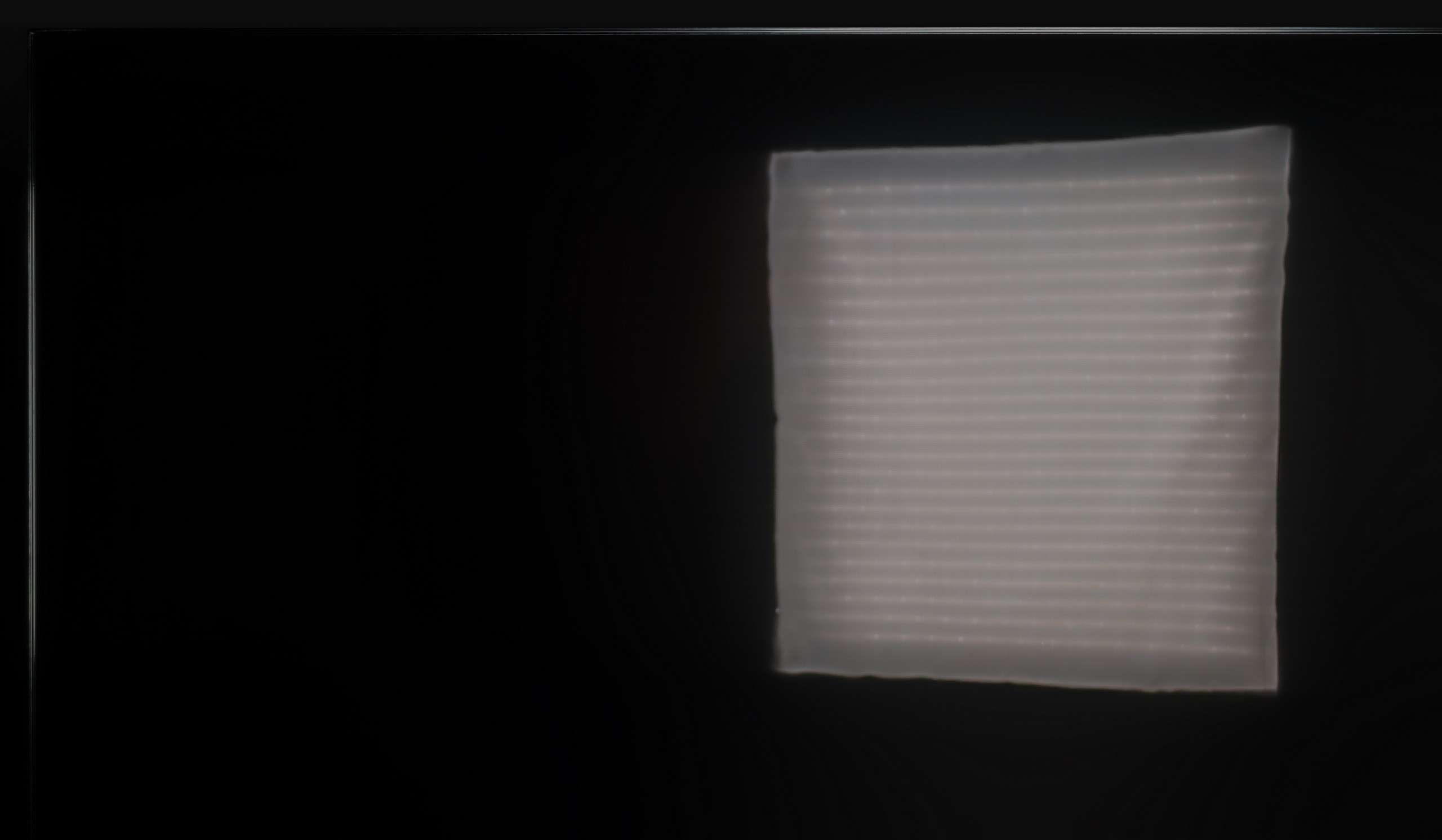

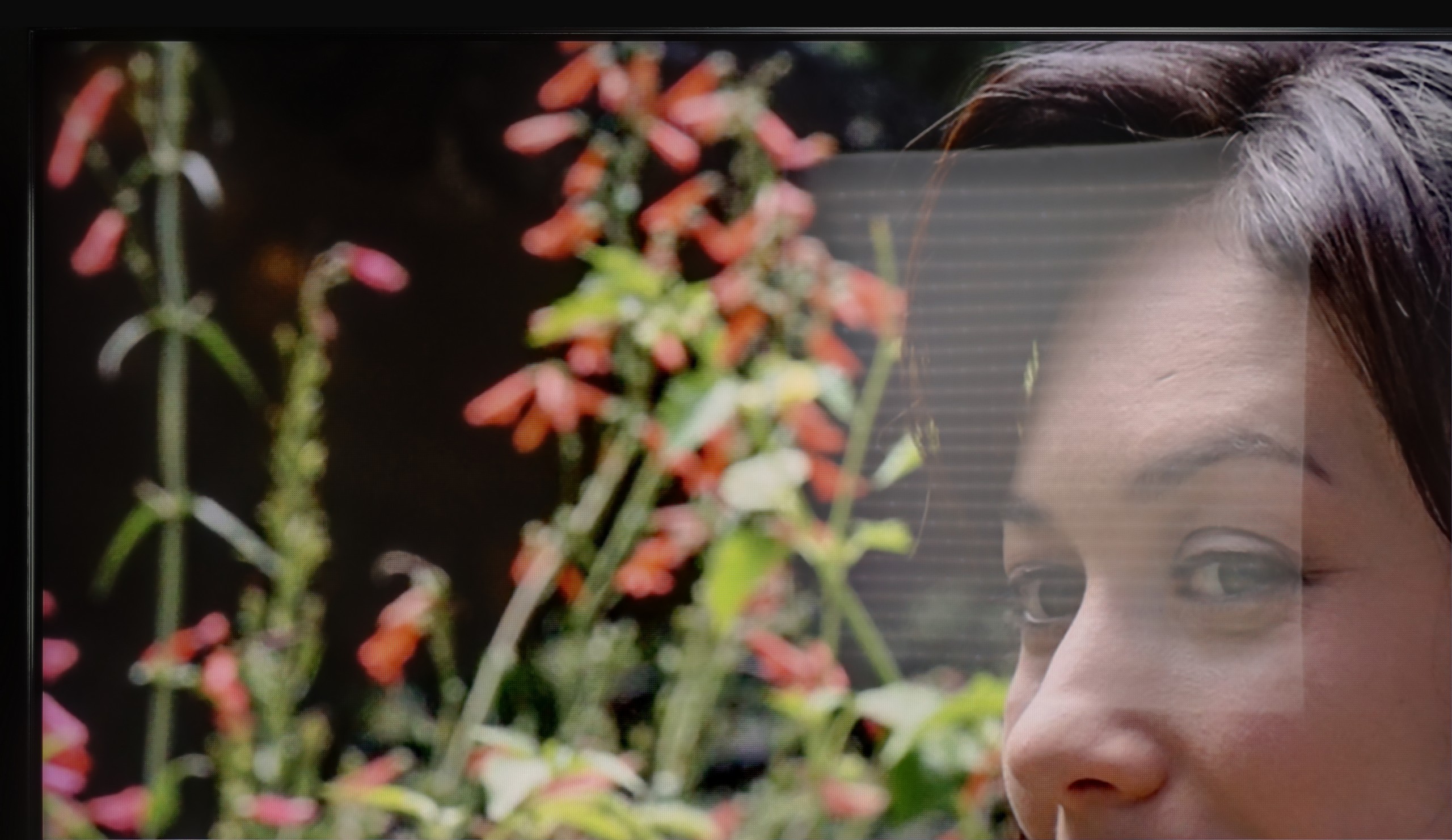

Matrix brightness
Average luminance SDR
Samsung Q7F: 237 cd/m2
Hisense U8Q: 914 cd/m2
Hisense has introduced a new anti-reflective coating called Anti-Reflection PRO. It aims to improve viewing comfort in difficult lighting conditions – and it really does the job. Reflections don't disappear entirely, but they are well controlled and do not interfere with everyday viewing. However, the highlight is the brightness in SDR – around 1000 nits! That's a result that would make top super premium models proud. As a result, the U8Q performs excellently in sunny rooms and can definitely be considered one of the best televisions for daytime viewing.
The performance of the Q7F during the day unfortunately doesn't impress. Due to its low brightness, the screen quickly capitulates in very sunny rooms. Therefore, it’s hard to recommend it to those who plan to watch television in a bright living room with large windows. In moderately lit rooms, it manages reasonably well, but in bright light, the image loses clarity. Additionally, the fact that the panel doesn’t always effectively handle reflections means that glares can be bothersome during the day. This is rather a screen for evening viewing than for daily sessions in full sunlight.
Details about the matrix
Subpixel Structure:

Panel uniformity and thermal imaging:
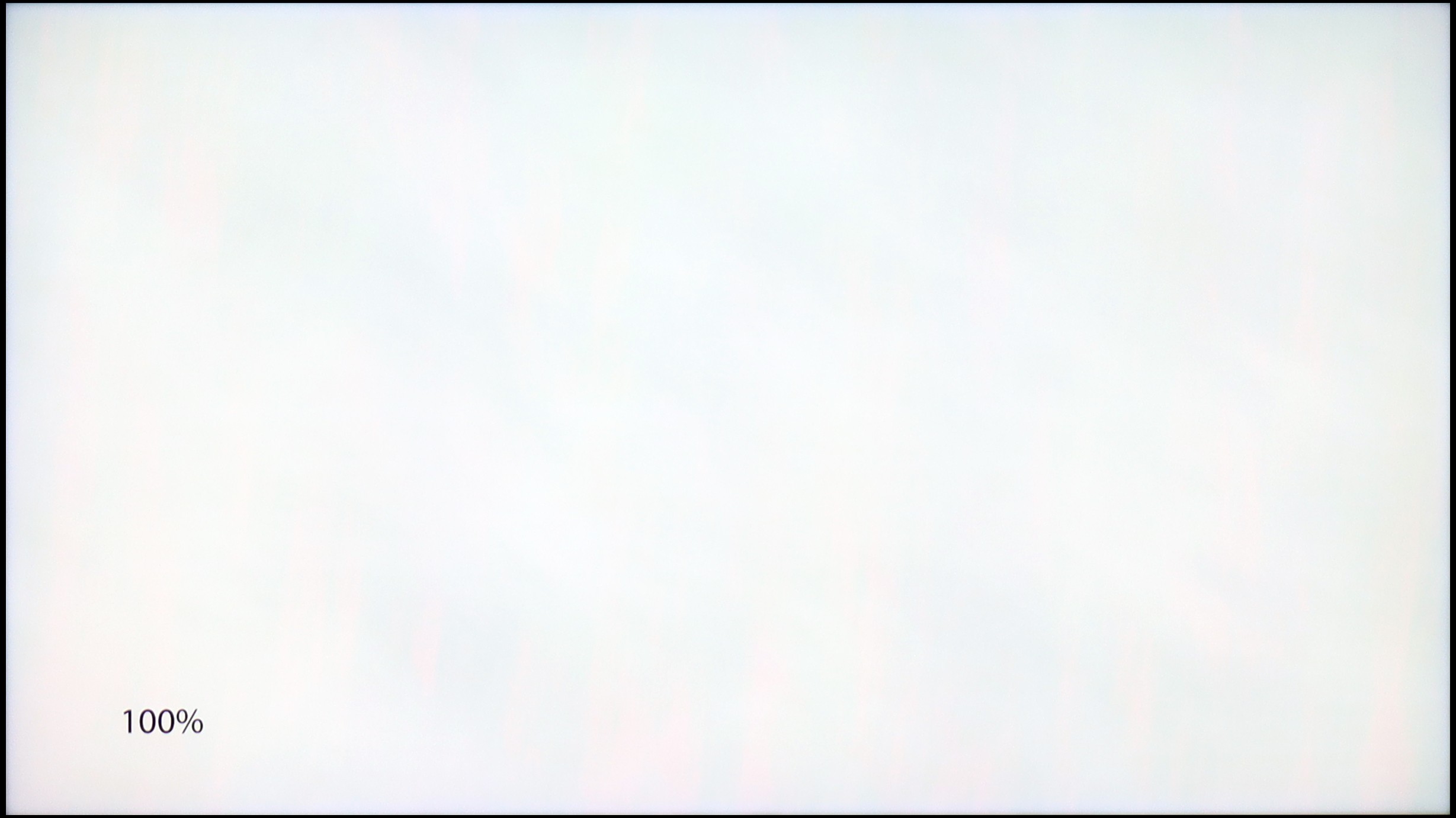

Hisense U8Q
Samsung Q7F
TV features
9.4/10
6.6/10
- HDMI inputs0 x HDMI 2.0, 3 x HDMI 2.1 48Gbps3 x HDMI 2.0, 0 x HDMI 2.1
- Other inputsToslink (Optical audio), RCA (Chinch)
- OutputseARC (HDMI), ARC (HDMI), Mini-Jack (Headphones)Toslink (Optical audio), eARC (HDMI), ARC (HDMI)
- Network InterfacesWi-Fi 2.4GHz, Wi-Fi 5GHz, Ethernet (LAN) 100MbpsWi-Fi 2.4GHz, Wi-Fi 5GHz, Ethernet (LAN) 100Mbps
- TV receptionDVB-T, DVB-T2, DVB-S, DVB-S2, DVB-CDVB-T, DVB-T2, DVB-S, DVB-S2, DVB-C
Classic features:
- Recording to USB (terrestrial TV)
- Recording programming
- Picture in Picture (PiP)
- RF remote control (no need to aim at the screen)
- Backlit remote control
- Teletext
- Audio only mode
- Bluetooth headphones support
- Simultaneous Bluetooth headphones & TV audio
Smart features:
- AirPlay
- Screen mirroring (Windows Miracast)
- Voice search
- Voice search in native language
- Ability to connect a keyboard and mouse
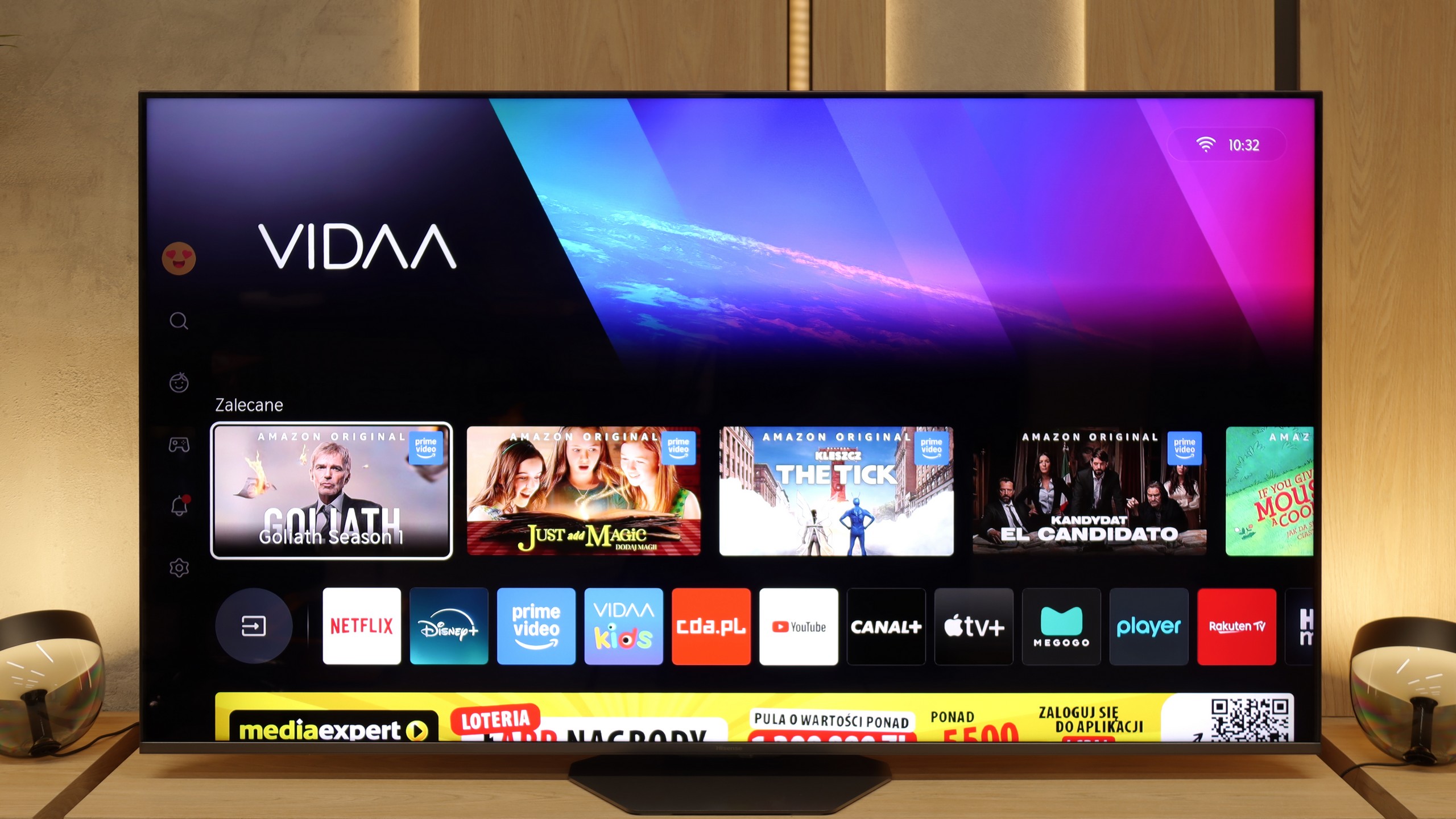
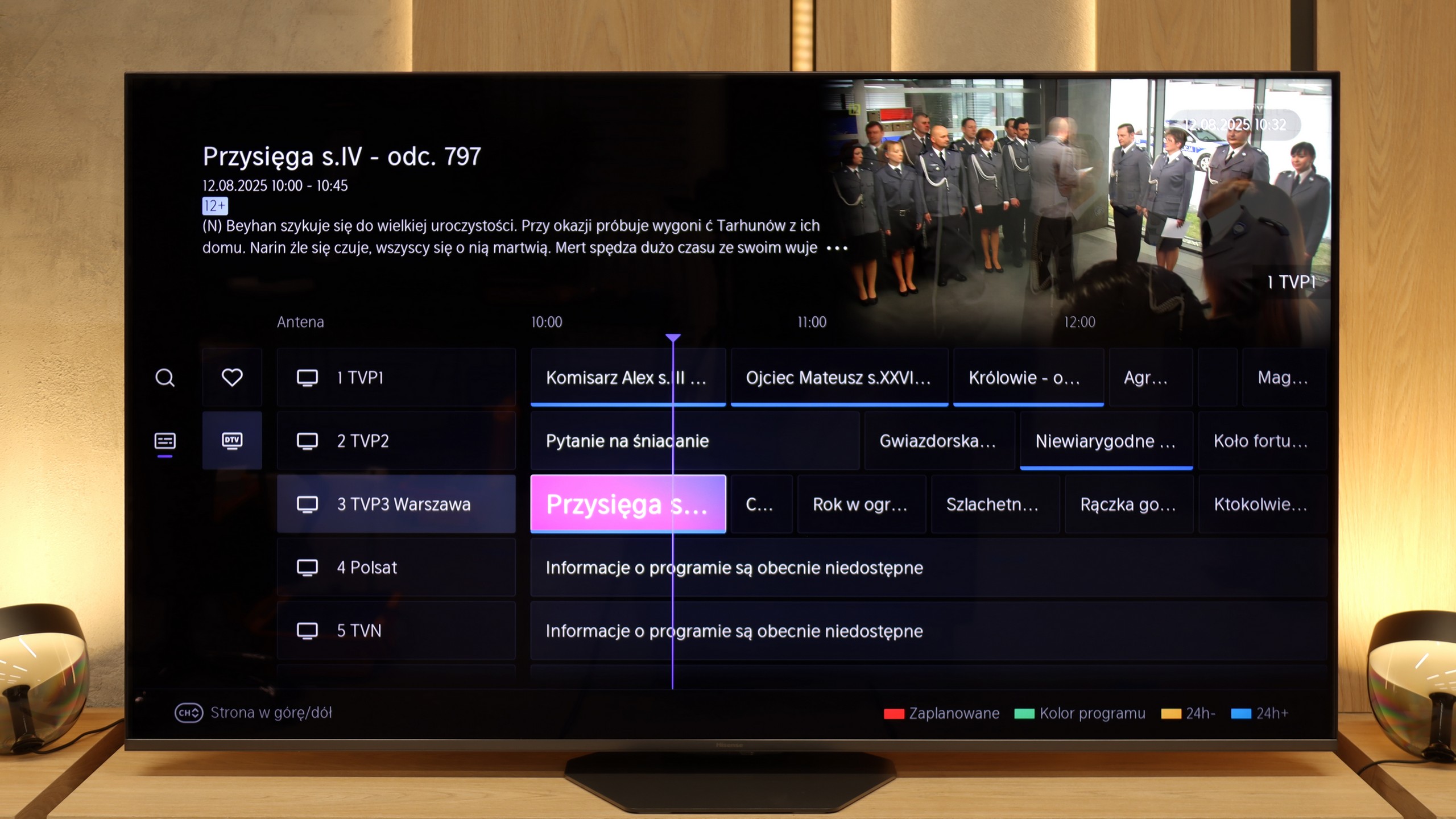
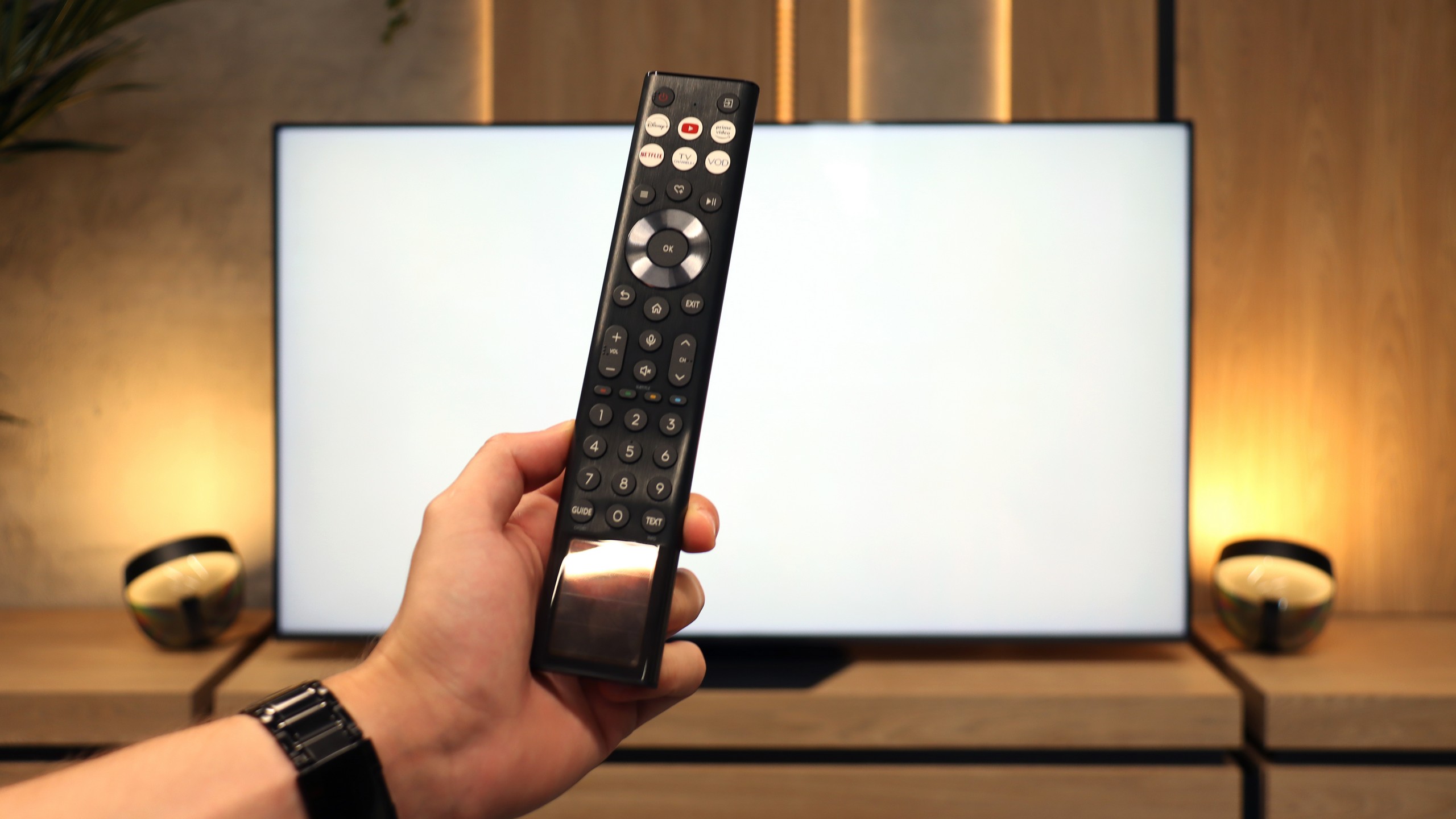
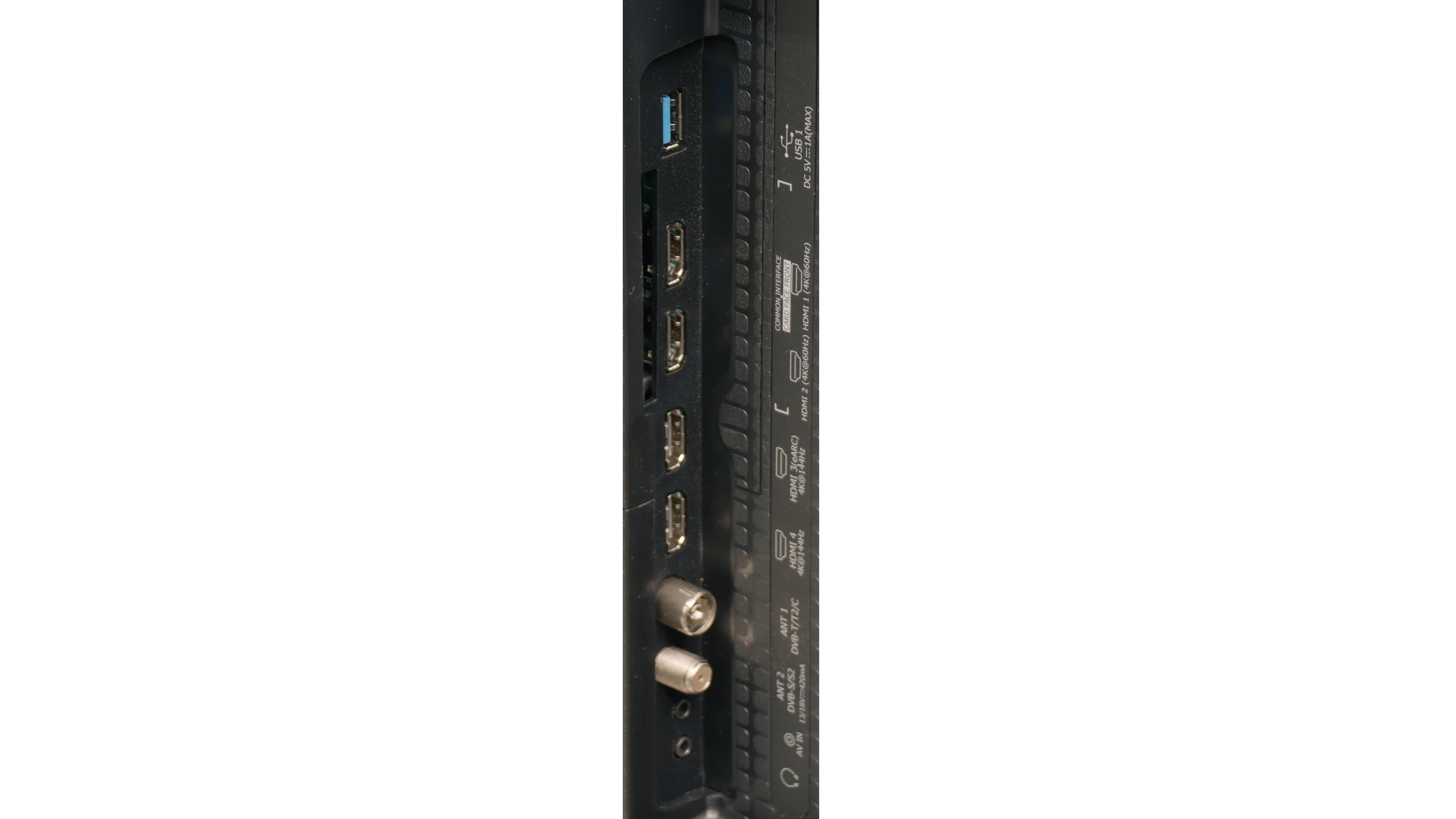




Classic Features
Hisense U8Q runs on the VIDAA system, which can still be considered a newcomer in the European market, but it must be acknowledged – the manufacturer really has a lot to offer here. You'll find classic features that many people still find useful: USB recording, a clear EPG guide, and the ability to connect wired headphones, which will be particularly appreciated by seniors. A nice addition is the presence of an audio jack – a connection that is slowly disappearing from televisions, but has been retained here.
USB-C in the TV!
A new feature in the U8Q is the USB-C port with DisplayPort support. This is a non-standard but very practical solution – it allows you to connect a laptop or phone with a single cable, even if those devices don't have an HDMI output.
Smart Features: VIDAA
When it comes to smart features, VIDAA operates smoothly. The interface is fast, apps open without significant delays, and network functions – such as screen mirroring or AirPlay – work very well. Sure, there are some minor shortcomings, but these are more details than real problems. The Achilles' heel remains the somewhat limited app library. However, it's worth remembering that the list of available programs can change from day to day – some disappear, others appear, so the situation may improve.
Smart TV – Tizen System
Here the Q7F shows its strongest side. Samsung has been developing the Tizen system for years, and it's clear that we are dealing with a mature, refined platform. Everything runs smoothly, the menu doesn’t lag even when switching between heavier applications, and installing additional programs from the library is quick and hassle-free. Additionally, there’s full support for AirPlay, integration with voice assistants, as well as a wide range of add-ons – from cooperation with devices in the SmartThings ecosystem to the ability to control Philips Hue smart lighting or other smart gadgets. Samsung strongly emphasises expanded network features, and it's evident – in terms of Smart TV, the Q7F has absolutely nothing to be ashamed of; on the contrary, it can put to shame more expensive competitors.
Classic Features
On the side of classic, “television” solutions, it’s clear that the manufacturer has put everything on the smart card. We won’t find USB recording or PiP mode here, which were once standards. It’s apparent that the Q7F is meant to be primarily a multimedia centre, rather than a device for those accustomed to more traditional solutions. Fortunately, there are a few practical additions – we have Bluetooth for pairing headphones or speakers and an option to change the font size in the menu, which users with weaker eyesight will appreciate.
Playing files from USB
8.3/10
9/10
Supported photo formats:
Maximum photo resolution:
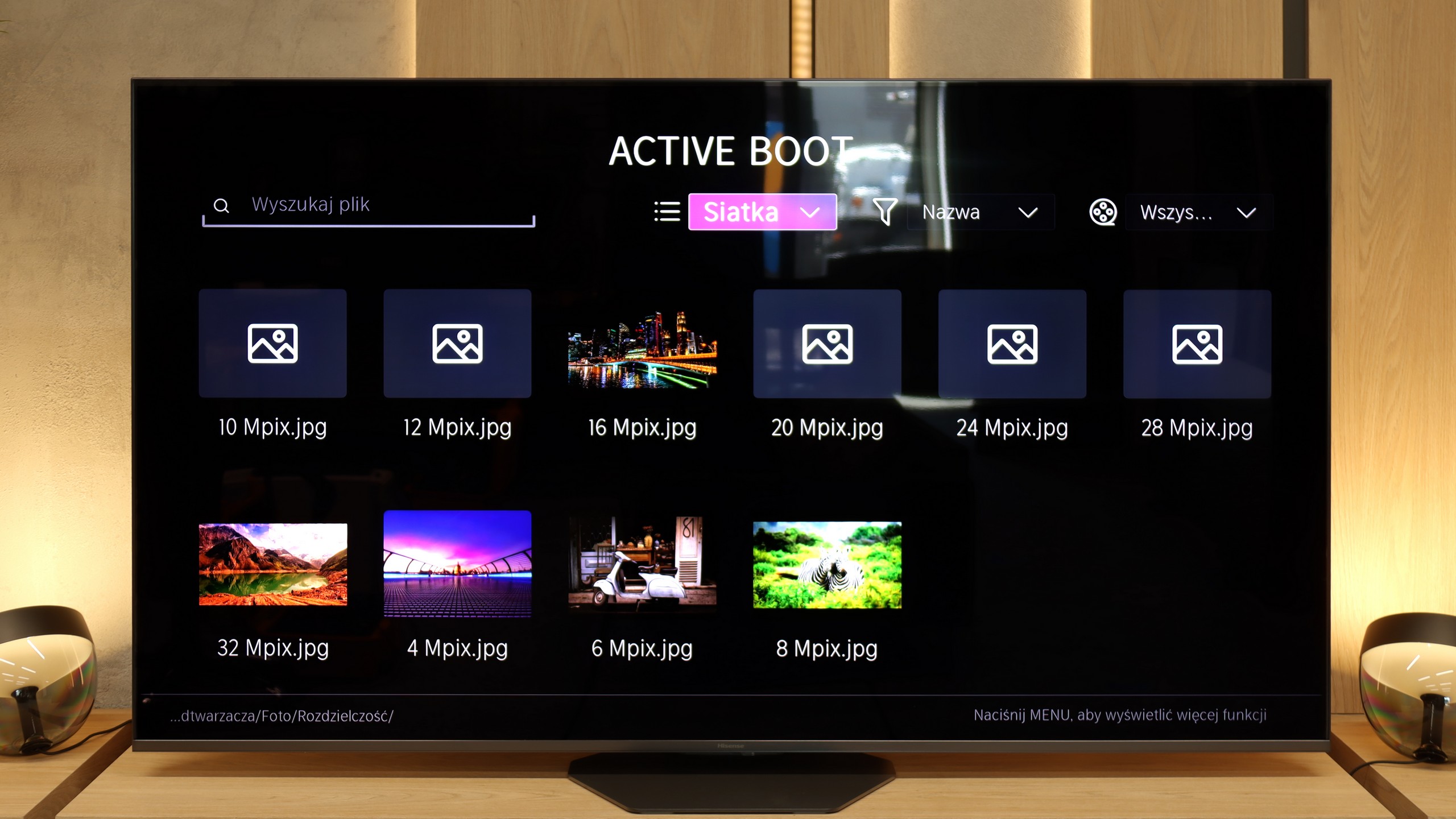

The built-in media player in the Hisense U8Q will be completely sufficient for most people. The television opens popular video and audio formats and also handles photos. However, there is a small caveat – not all photo resolutions are supported. Therefore, if we have photographs saved in a very high number of megapixels, they may simply not open. It’s worth bearing this in mind to avoid unpleasant surprises during the family photo show.
In the Q7F, we have a built-in file player and, as is usually the case with Samsung TVs, it works quite well – most popular movies or music play without any fuss. For basic use, it’s sufficient and you probably won’t need to reach for external solutions like connecting a laptop. It’s a different story if someone wants to upload photos – it can struggle here, especially with Apple’s HEIC or PNG, which are visible in the player menu but don’t necessarily want to work.
Apps
7.7/10
8.7/10














































Sound
7.8/10
5.8/10
- Maximum volume88dB80dB
- Dolby Digital Plus 7.1
- Dolby True HD 7.1
- Dolby Atmos in Dolby Digital Plus (JOC)
- Dolby Atmos in Dolby True HD
- DTS:X in DTS-HD MA
- DTS-HD Master Audio
The Hisense U8Q performs really well in terms of sound. The audio is pleasant, with a slight bass and quite decent mid tones, so it’s perfectly adequate for everyday viewing of movies, series, or gaming.
It does get a bit worse when we crank the volume up to 100%. That’s a rather rare scenario, but it’s worth mentioning. With very strong bass, the rear speakers start to work so intensely that the TV can slightly “rattle,” and the sound takes on an unpleasant, plastic echo. Therefore, it’s best to keep the volume between 70–80% – at that level, the U8Q sounds clear and enjoyable, without any unwanted effects.
Samsung Q7F has a speaker set with a power of 20 W and… well, let's not kid ourselves, it's not a revelation. The TV itself sounds quite decent, meaning series, news, or daily programs are clearly audible, dialogues are not lost, but there's a significant lack of depth or sound space. There's practically no bass; something thuds, but it resembles tapping on a box more than real low frequencies. Music sounds flat, films also don't leave a strong impression – you won't feel like you're in a cinema. It's a sound in the "acceptable" category, just to have something built-in, but if someone is hoping for a stronger experience, they'll end up reaching for a soundbar sooner or later. And to be honest – even the simplest model will make a noticeable difference, and Samsung has quite a few of those on offer.
Acoustic Measurements
88dBC (Max)
75dBC
80dBC (Max)
75dBC


